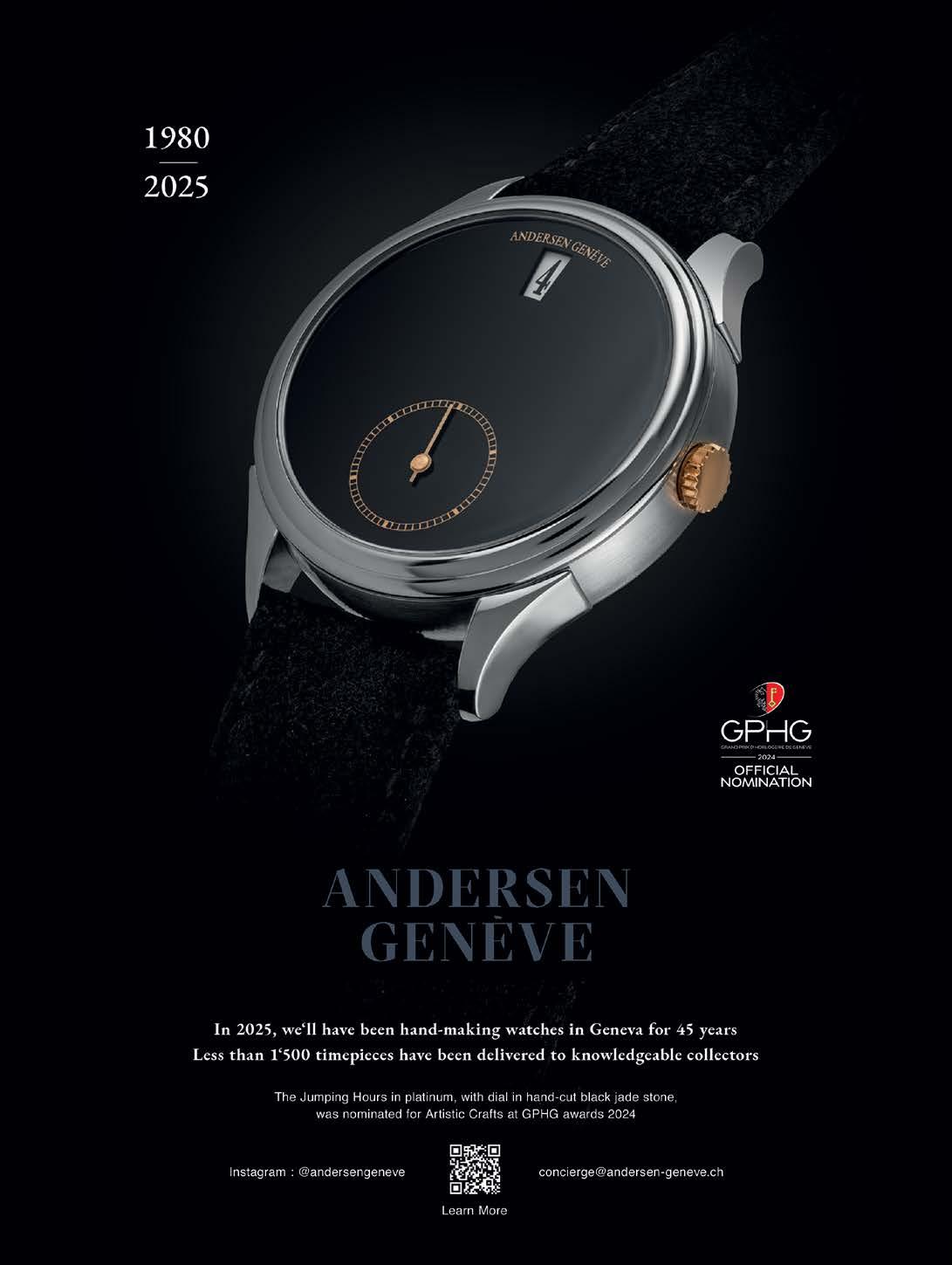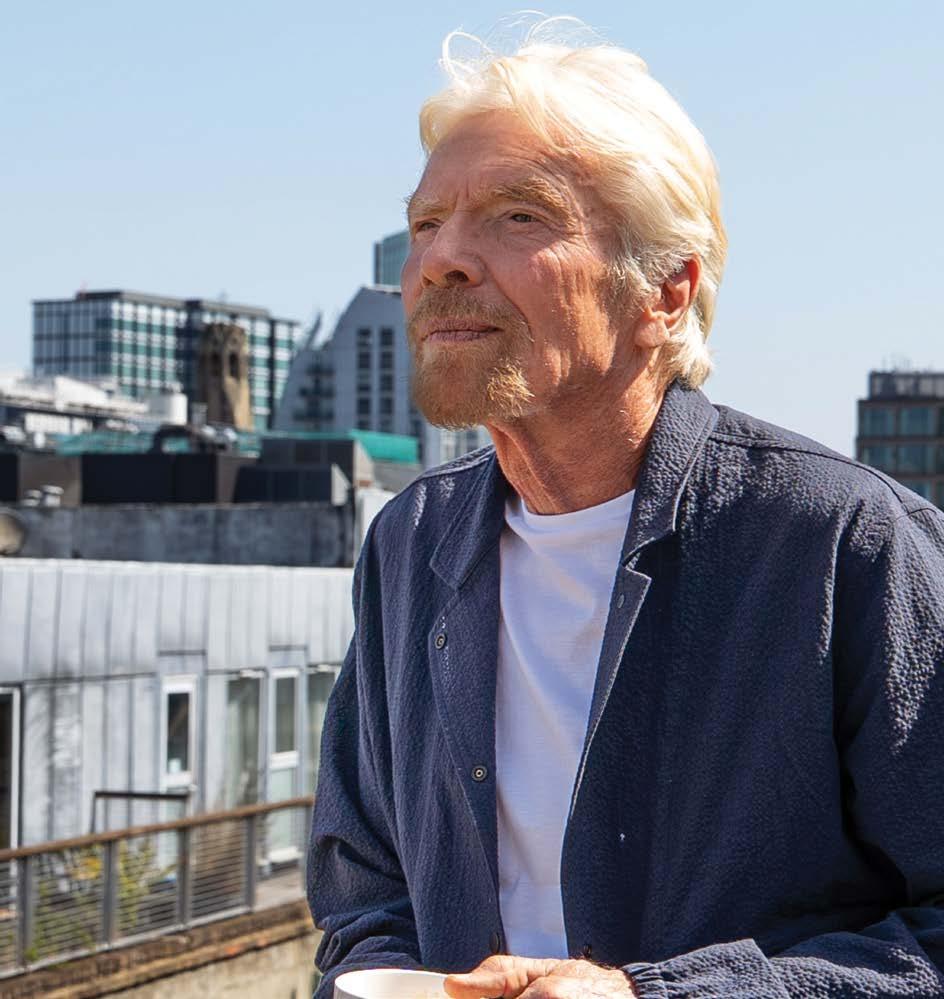



FEATURES











↑ Kateryna Serdiuk, founder of Subjektiv, drives growth in the art market
FEATURES EDITOR Patricia Cullen patricia.cullen@bncb2b.com
CEO Wissam Younane wissam@bncpublishing.net
MANAGING DIRECTOR Rabih Najm rabih@bncpublishing.net
ART DIRECTOR Simona El Khoury
EDITORIAL TEAM Tamara Pupic, Aalia Mehreen Ahmed
MEDIA SALES MANAGER Olha Kovalova olha.kovalova@bncb2b.com
GENERAL MANAGER Daniel Malins daniel@bncb2b.com
REGIONAL DIRECTOR Andy B. andy@bncb2b.com
CONTRIBUTING WRITERS
Ed Hayes, Sarah Yorston, Michael Bush, Dr Lisa Turner, Alex Lampe and Omar Hamdi
SUBSCRIBE
Contact subscriptions@bncb2b.com to receive Entrepreneur United Kingdom every issue.
COMMERCIAL ENQUIRIES sales@bncb2b.com
Access fresh content daily on our website
Richard
Branson and Simon Squibb share their insights, while we explore the experience economy, scaling secrets, artificial intelligence and building for the future.
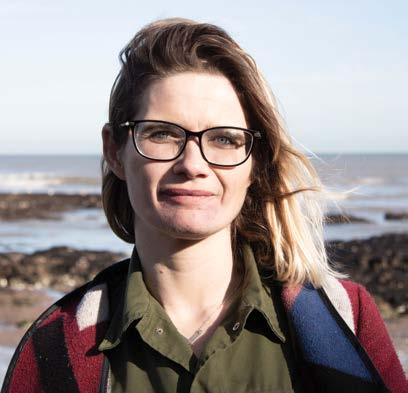
This issue starts with a legend. On the cover: Richard Branson - founder, risk-taker, and master of the unconventional route. Inside Virgin Hotel in London-Shoreditch, surrounded by a new generation of startup founders, he speaks not from a stage but from experience. There’s no fanfare - just an open conversation on what it takes to build something that lasts. No script, no polish - just Branson recalling what it meant to knock on hotel doors as a teenager, tape recorder in hand and building something from nothing.
He’s joined in conversation by Simon Squibb, - one who now advocates fiercely for collaboration over competition, and for reshaping an education system
that so often sidelines creative thinking. In the May issue of Entrepreneur UK, they reflect not just on how to start a business, but why it matters - and what it costs. That theme of purpose runs through everything in this issue. We turn to the experience economy, where growth isn’t measured in units sold but in moments shared. In a post-product world, people want connection — and James Wallman, CEO of the World Experience Organization, argues it’s time to treat experiences not as a niche, but as the next engine of the UK economy. We also get practical. In Scaling Secrets, founders share the unseen truths behind growth - from staying lean to learning when to let go. Tech and strategy collide in a sharp insight from Catriona Campbell MBE, AI Client Strategy Leader at EY and chapter ambassador for the AI Summit London. Her message? AI works best when it amplifies human intuition, not replaces it. Elsewhere, we explore how brands can stay culturally relevant in a world of short attention spans, why employee engagement is no longer optional, and what smart contingency planning really looks like in 2025. And because behind every idea is a person trying to hold it all together, we look at how AI can be used not just to automate workflows, but to manage stress, and we unpack why so many business transformations fall apart — and how not to be one of them. These are the kinds of ideas that move things forward - quietly, steadily, and with impact. Wherever you are on the journey, we hope this Entrepreneur UK issue leaves you energised to keep building.
Patricia Cullen Features Editor, Entrepreneur United Kingdom

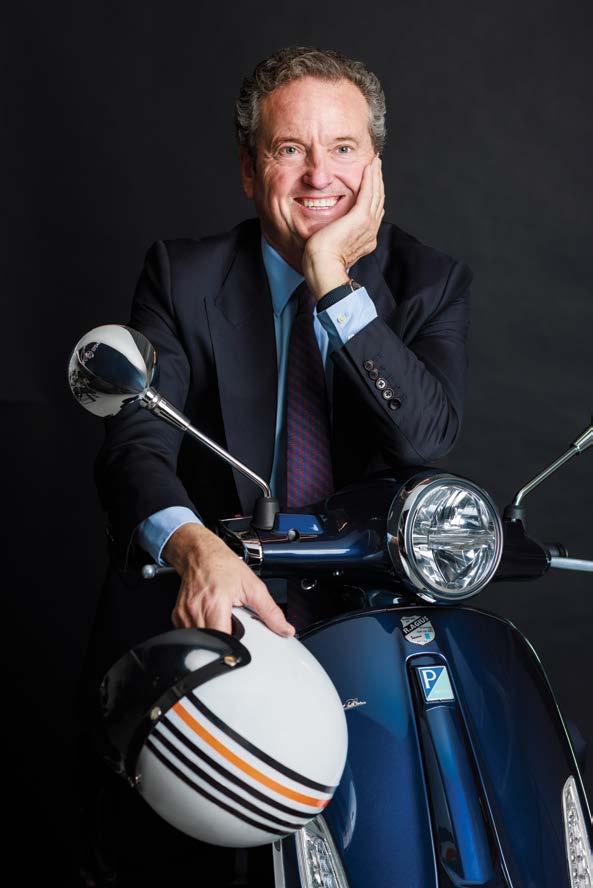
→ David Milner, Executive Chairman of Crosta Mollica, at the helm of the brand’s next growth chapter
Why David Milner only bets on brands built to shake up the system
by PATRICIA CULLEN
With a track record of turning challenger brands into household names, David Milner, Executive Chairman of Crosta Mollica, is no stranger to transformative growth. Having previously helped scale iconic names like Tyrrells, Lily’s Kitchen, and the St Pierre Group, Milner’s strategic insight into brand-building is razor-sharp - and his current mission is no exception.
Crosta Mollica, a premium Italian food brand best known for its restaurant-style pizzas, is under his stewardship and rapidly redefining how consumers experience authentic Italian cuisine at home. But what’s the blueprint behind these consistent successes? For Milner, it starts with a very specific framework.
“I prefer to call them challenger brands! They all had very similar characteristics in that they met my three criteria which I use to decide whether to invest my time and my capital in a business,” he explains.
“Firstly, does it stand out and have a demonstrable market advantage over its competitors? And is it in a category big enough to have space for it to grow to its full potential? I see no point in brands, however unique, if their category is niche. Secondly, is it a brand which has the scope to disrupt the status quo in sectors historically dominated by giant companies or own label? Thirdly, I love brands with international potential because that opens the door to global markets and stellar valuations for the business.”
This clarity of vision allows Milner to not only identify highpotential brands but to build them with intention from the inside out. At the heart of this process is talent and structure.
“Once I am on board, my first consideration is structure. The
sooner I can get the right people doing the right jobs, the sooner the big picture strategy can start to take shape,” he says. “This does not mean I go into a business and take people out, it is more often the reverse when I discover good people possibly in the wrong role or not being asked to play to their greatest strengths. People in a business are as valuable as chess pieces and my strength comes from getting this strategy right and then letting people get on and deliver.”
This people-first mindset was a key part of his approach when he was approached to lead Crosta Mollica.
“I already knew of the company as a premium retail pizza brand that delivered an authentic restaurantstyle pizza straight-out-of-the-oven eating experience,” he shares. “I quickly discovered it was the only retail brand made in Italy using the highest quality ingredients and methods to produce such an outstanding product. But what it didn’t have was decent shelf presence or widespread consumer appreciation.”
With the foundation laid, the next step was messaging and market presence.
“The next most important task is getting the right message out there both in terms of presentation (branding and packaging) and profile (editorial and influencing),” says Milner. “Early on I discovered a small team of people I trusted to be able to take my vision and make it work.”
Now on an ambitious growth trajectory, Milner has his sights set on expanding Crosta Mollica’s market reach without compromising the integrity that makes the brand special.
“My priorities are threefold: expanding our market presence, deepening customer engagement with our range of products, and strengthening operational scalability,” he says. “We are highly focused on unlocking new distribution channels. Despite our rapid growth, we still have terrific scope within grocery channels both

in the UK and Europe. We have a strong customer proposition, arguably without too much competition, so the challenge is to grow our share of the sector and expand that opportunity with a premium product offering.”
But scaling, especially in the food and beverage space, comes with its own set of challenges. The key to success? Strategic alignment.
“If you are confident that your product, packaging and messaging are aligned the challenges thereon in are to maximise distribution and grow the proposition synergistically,” he explains.
It helps that Crosta Mollica operates in one of the most universally loved food categories.
“Pizza is the most ubiquitous meal on the planet, more widely eaten than any other foodstuff. It symbolises comfort, community and celebration in all corners of the world and effortlessly straddles the divide between luxury and necessity,” he says. “But I never take my eye off the Crosta Mollica product and am constantly looking at the scope to broaden the proposition whilst strengthening the core of the brand. For example, we have recently added Roast Garlic Stone Baked Flatbread to the range, and it is an obvious and complementary expansion. It has effortlessly joined
“ }}
PEOPLE IN A BUSINESS ARE AS VALUABLE AS CHESS PIECES AND MY STRENGTH COMES FROM GETTING THIS STRATEGY RIGHT AND THEN LETTING PEOPLE GET ON AND DELIVER”

the range offering and has been an immediate success.”
In such a competitive landscape, staying ahead of consumer expectations is vital.
“Brand differentiation in a crowded market comes down to authenticity and consistency,” says Milner. “We craft a clear, compelling brand voice and visual identity that stays true across every touchpoint - from packaging to social media to retail presence. We also invest heavily in New product development (NPD), not just to follow trends, but to set them.”
Equally important is the partnerships with key allies who drive retail success.
“I also never underestimate the value of working closely with retail buyers. They know their customer best of all and when we do our job properly, we not only offer ways to help them tempt their customers further but also we give them confidence they can trust us and that we are a reliable partner who can deliver.”
Of course, no market research beats first-hand experience. For Milner, that means staying close to the product’s roots - both culturally and culinarily.
“I am also a great believer in getting out and sniffing the air! In the case of Crosta Mollica, that is about going to Italy and travelling around to the different regions to better understand the market and then being able to reflect this through the business,” he shares. “I have just returned from such a trip travelling from Rome to Naples and lots of places in between— from restaurants to little Nonna holes-in-the-wall—trying very local pizzas and getting inspiration and ideas for incorporating in our range. This level of understanding can’t be done from behind a desk in London.”
With all this expertise, Milner has a clear view on where many businesses falter when attempting to scale - and how they can avoid those pitfalls.
“One of the most common mistakes businesses make when scaling is growing too fast without a solid operational foundation. It’s easy to chase top-line growth, but without scalable systems, the business can crack under pressureleading to supply chain issues, poor customer experience, or brand dilution.”
And as tempting as it may be to expand too quickly or too broadly, Milner believes that success depends on staying true to the brand’s core promise.

“In the rush to expand product lines or enter new markets, you have to guard against straying from what underpins your business,” he cautions. “Successful innovation remains at the heart of our product
“
WE CRAFT A CLEAR, COMPELLING BRAND VOICE AND VISUAL IDENTITY THAT STAYS TRUE ACROSS EVERY TOUCHPOINT - FROM PACKAGING TO SOCIAL MEDIA TO RETAIL PRESENCE”
development, to ensure we stay relevant and ahead of consumer trends. As we scale, maintaining the authenticity and quality that built our loyal customer base is non-negotiable.”
Milner is passionate about staying rooted in the mission and values of the business, and making sure every new initiative aligns with their long-term brand story. “My mantra is to grow fast
- but smart. I always want to build a business that is not just bigger, but better at every level.”
In Crosta Mollica, Milner has found a brand with not only the right foundations, but also the soul to make a lasting global impact. And with his measured, mission-led approach to growth, it’s clear that this is just the beginning of another standout success story.

→ From strategy to shelf: David Milner is rewriting the premium playbook with the Crosta Mollica Stromboli
Catriona Campbell on making AI work for business
by PATRICIA CULLEN
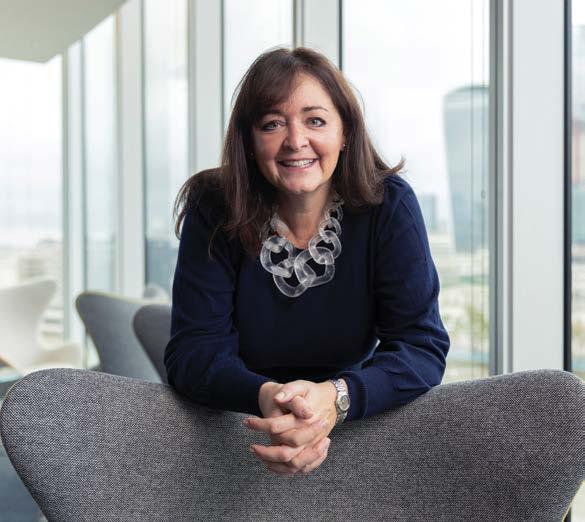
In the gold rush of artificial intelligence (AI), it is easy to mistake excitement for execution. For many entrepreneurs, the promise of AI is a heady one: smarter decisions, streamlined operations, and innovation at scale. Yet, as Catriona Campbell MBE - AI Client Strategy Leader at EY and a chapter ambassador for the AI Summit Londoncautions, success with AI requires far more than enthusiasm. Campbell, a veteran in AI strategy and one of the UK’s most influential women in technology, has spent her career bridging the gap between cutting-edge innovation and business impact. Her message to entrepreneurs is deceptively simple: focus on what matters.
For AI, and the more recent advancements in the field to be successful,” Campbell explains, “business has to align with existing business objectives and ensure stakeholder buy-in.” Without this strategic fit, even the most promising AI tools risk becoming expensive distractions. This grounding in business reality is what sets Campbell apart from many AI evangelists. Her vision is not of a distant future filled with humanoid assistants and algorithmic visionaries, but of pragmatic implementation today - starting with small, clear wins.
The Entrepreneur’s Edge: Agility Meets Intelligence
Having advised organisations from start-ups to global enterprises, Campbell has seen firsthand the enthusiasm - and anxiety - that AI stirs in business leaders. For entrepreneurs, she says, the biggest obstacle is not technology, but comprehension. “The most common challenge is the lack of understanding and expertise in AI. But don’t fear. Entrepreneurs are an agile lot!” Agility is indeed the entrepreneur’s greatest strength. Where corporations get bogged down in process and politics, start-ups can experiment. The key, Campbell advises, is to start small. “They need to invest in AI education, partnering with AI experts, and starting with small, manageable projects to build confidence and demonstrate value.”
This ‘test and learn’ approach is far more likely to deliver value than a top-down AI overhaul. Think: a retail start-up using machine learning to optimise inventory, or a fintech firm deploying natural language models to handle customer support.
One of Campbell’s go-to examples is deceptively modest but powerful: “A good example is using Microsoft Co-Pilot to help with marketing
IT OFFERS UNPARALLELED ACCESS TO CUTTING-EDGE AI TECH. WHERE ELSE WILL YOU SEE EVERYTHING IN ONE PLACE? IT ALSO OFFERS PRACTICAL WORKSHOPS, AND NETWORKING WITH LEADING AI PROFESSIONALS. SAVING BUSY ENTREPRENEURS VALUABLE TIME!”
copy.” In other words, AI doesn’t need to transform the core product on day one. Sometimes, it just needs to free up the founder’s time.
From Hype to Habit: Building an AI-Ready Business
Of course, no AI system can outperform a flawed foundation. Data, long the hidden engine of digital businesses, becomes mission-critical in AI.
Campbell offers a clear, actionable entry point: “Entrepreneurs may wish to prioritise data quality in order to get ready to deploy AI across their business. Start by auditing existing data and establishing processes for continuous data improvement.”
This focus on data readiness - a term often neglected in headline-grabbing AI narratives - is key. Clean, well-structured data not only improves algorithmic outcomes but reduces implementation costs and risks. Campbell’s emphasis on business problem-solv-

ing over technological novelty is echoed in her strategic guidance: “I’d ensure a focus on solving specific business problems with AI rather than pursuing AI for its own sake. Identify areas where AI can add the most value and start with projects to prove the concept before scaling.” This measured approach, she suggests, is what separates gimmicks from game-changers. “AI’s potential is vast - but only when rooted in real needs and validated by real results.”
London AI Summit: Knowledge,
For entrepreneurs unsure where to begin—or how to level up—Campbell offers a clear directive: attend The London AI Summit
London. Part showcase, part think tank, the event brings together the people, tools, and insights that matter. “Entrepreneurs can expect to gain insights into the latest AI technologies, best practices for implementation, and case studies of successful AI adoption. These are a MUST to listen to!”
Beyond the stage, the Summit’s real power may lie in its connections. As Campbell notes: “Networking with industry leaders and experts will also provide valuable knowledge and potential collaboration opportunities.” In a time-starved world, The AI Summit offers something rare: curated access to both knowledge and people who can accelerate AI journeys. “It offers unparalleled access to cutting-edge AI tech.
Where else will you see everything in one place?” she asks. “It also offers practical workshops, and networking with leading AI professionals. Saving busy entrepreneurs valuable time!”
Think Big, Start Smart Campbell’s message is not about chasing the next AI headline - it’s about embedding AI where it counts. For entrepreneurs, the opportunity is not just to adopt AI, but to own their AI strategy. That means aligning with business goals, investing in understanding, and iterating with intent. In Campbell’s world, AI is not magic. It’s method. And for those who learn to wield it wisely, it may well become one of the defining tools of modern entrepreneurship.
by ENTREPRENEUR UK STAFF
Scaling a business is one of the most challenging yet exciting feats for any entrepreneur. It requires a delicate balance between maintaining quality, building a strong culture, managing operational hurdles, and adapting to ever-evolving customer needs. To uncover the secrets to scaling successfully, Entrepreneur UK spoke to three leaders who have navigated this path: Lauren Chiren, CEO of Women of a Certain Stage, Richard Robinson, CEO at Robin AI, and Griffin Parry, CEO of m3ter. Here’s how they scaled their businesses effectively without losing sight of what made them unique.
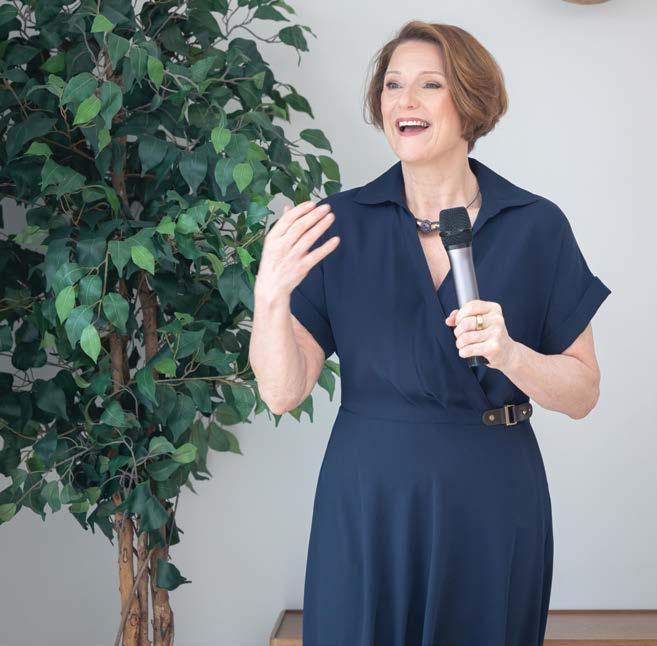
For Lauren Chiren, scaling was all about establishing a repeatable foundation without compromising the quality of service her business offers. “From the start, I focused on documenting systems and processes that worked - everything from client onboarding to delivery standards and follow-up procedures,” she explains. By creating clear, repeatable processes, Chiren was able to quickly scale her operations and train new team members efficiently, ensuring consistent quality even as demand increased. But growth doesn’t happen overnight. Lauren advises adopting a “lean scaling” approach, where businesses grow in stages. “We tested each new program or service in a smaller setting before rolling it out more widely,” she shares. This approach allowed her team to troubleshoot potential challenges early on and maintain high standards of service, whether in menopause education or hygiene services. As Chiren points out, “Culture doesn’t happen by accident—it’s something you have to cultivate intentionally.” Additionally, her team was guided by values of integrity, compassion, and professionalism. This deep commitment to core principles helped ensure that her company’s growth was not just rapid but also sustainable.
→ Richard Robinson, CEO of Robin AI, actively transforms the legal tech landscape
Richard Robinson of Robin AI also emphasises a strategic approach to scaling, focusing on maintaining the pace rather than rushing for speed. “We preach pace over speed. We want to always be moving forward, but not at any cost,” he shares. As an AI company, Robinson has to balance innovation with security and reliability. “We have to prioritise safety and security in our AI. We work hard to use tech where we can, like managing a global team with different legal obligations depending on their location.” In addition to ensuring that the right technology and tools are in place, Robinson takes a hands-on approach to
Culture doesn’t happen by accident- it’s something you have to cultivate intentionally” “
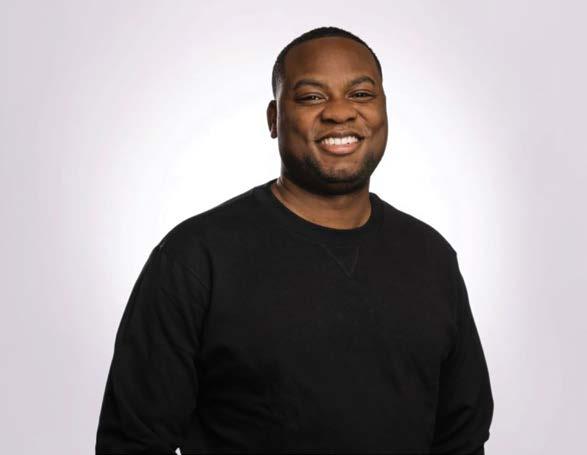
culture-building by maintaining open communication. “We run open-plan offices, with regular all-hands meetings. I sign-off on all new hires, and for senior hires, I interview them myself.” The hands-on culture has played a vital role in ensuring quality and cohesiveness even as the company expanded rapidly. However, operational challenges did arise. “We reached a point where most of our revenue was coming from the US but our brand awareness didn’t reflect that,” Robinson explains. He quickly identified that the solution was showing up—attending major events and engaging with tech and legal communities to increase visibility in the US
For Griffin Parry, CEO of m3ter, a London-based start-up that provides a metering and pricing engine for SaaS companies, maintaining a high quality of service while scaling required a methodical approach. “I think of building a company as solving a series of problems in the right sequence and at the right cadence,” he says. The challenges are seen as “brain teasers,” and scaling is about addressing each one carefully to ensure smooth growth. A major challenge, according to Parry, is maintaining culture and quality as the team grows. When you’re small, it’s
easy to ensure that every team member is aligned with the company’s mission. However, that becomes difficult as you expand. “The answer is to rely on mechanisms rather than good intentions,” he suggests. Parry emphasises that the key to successful scaling is being deliberate about culture. “You can’t impose culture, but you can deliberately cultivate it,” he notes. At m3ter, they hired a People Leader early on, creating systems and processes that embedded the company’s values. These efforts helped cultivate a strong company culture that the entire team could take ownership of, ensuring that the company remained cohesive despite rapid growth.
→ Griffin Parry, CEO of m3ter, redefines SaaS billing with usage-based pricing
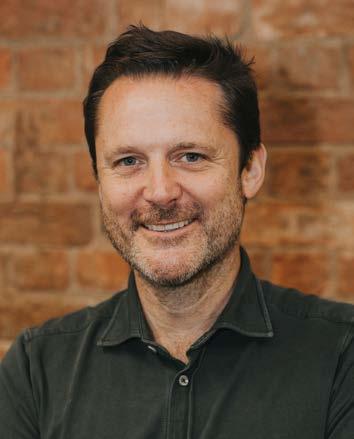
As these entrepreneurs scaled their businesses, they faced the challenge of striking a balance between acquiring new customers and retaining existing ones. Parry focuses on optimising customer satisfaction and retention. “We’re a recurring revenue business, and it’s cheaper to keep customers than win them,” he says. At m3ter, this focus on retention has not only resulted in a loyal customer base but has also led to product improvements. Similarly, Robinson believes in a flexible pricing model that ensures ongoing customer satisfaction. “We don’t get customers complaining about paying for services they didn’t use,” he explains. Robinson’s approach involves working closely with customers to develop new features and continuously improve their offerings. For example, Robin AI’s “Robin Reports” feature was co-developed with the University of Cambridge to meet specific needs. Robinson shares, “We couldn’t have done that without close relationships with that customer.”
When it comes to expanding into new markets, both Robinson and Parry emphasise being strategic and deliberate. Parry advocates for going “uncomfortably narrow” with your Ideal Customer Profile (ICP). “Be very specific about who you want to sell to and why you’re the best option for them,” he advises. It may take longer in the short term, but it leads to a stronger, more engaged customer base in the
long run. Robinson also focused on geographical expansion to the US where he identified a gap in brand awareness. His strategy included attending major events and building relationships within legal and tech communities. This type of “showing up” has helped Robin AI scale globally. Lastly, the entrepreneurs also weighed in on how UK trade policies have influenced their ability to expand internationally. For Chiren, the post-Brexit landscape posed challenges when working with global clients. While UK trade policies supported exports, navigating different tax and legal frameworks added complexity.
Similarly, Parry cited the UK’s favorable policies around EIS/ SEIS tax breaks and R&D tax credits as key factors that have supported m3ter’s growth. However, Robinson noted that “Brexit doesn’t make it easy to expand from the UK to continental Europe, so European expansion has taken a bit of a backseat as we focus on the US and Asia.”
The road to scaling a business is filled with challenges, but these entrepreneurs demonstrate that with the right strategies - be it a focus on repeatable processes, a commitment to culture, deliberate expansion, or the balance of customer acquisition and retention—you can navigate those challenges effectively. As they scale, they remain grounded in their mission, ensuring that growth is sustainable, aligned with values, and focused on the long-term goal. Scaling isn’t just about growing fast; it’s about growing smart. It’s this intelligent approach that enables entrepreneurs to scale their businesses without compromising quality.



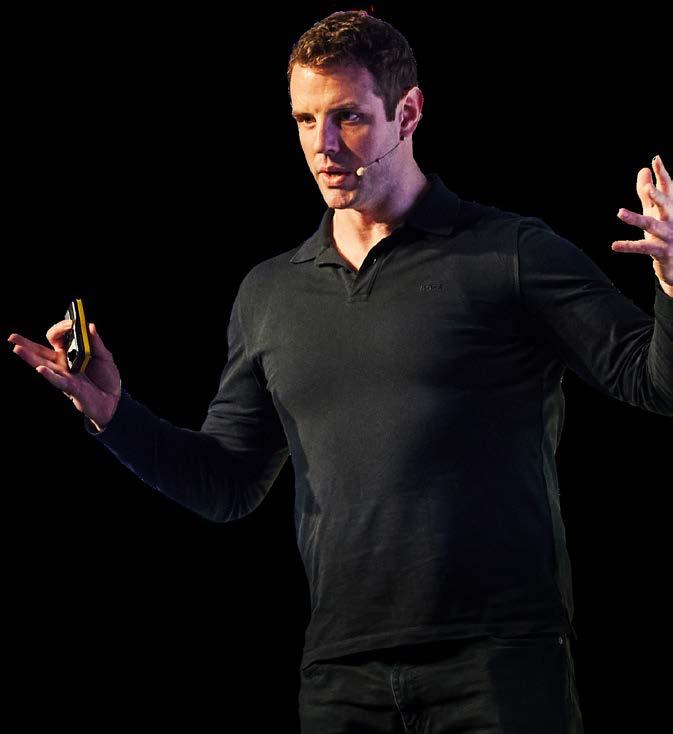



Putting money where the memories are by

On a grey Thursday in late February, amid the usual swirl of policy papers and political speeches, something quietly radical happened at City Hall. The Mayor of London unveiled a new 10-year “Growth Plan for London” - a sprawling, ambitious roadmap for the capital’s future. But tucked into its core pillars, beneath the expected language of innovation and infrastructure, was a phrase that’s long shaped the city’s soul but rarely its spreadsheets: experiences. For the first time, a major government-backed plan has formally recognised the experience economy not as a side act, but as a starring role in London’s economic story.
It’s the first time a government has explicitly said the experience economy is essential for a global city’s success,” says James Wallman, CEO and co-founder of the World Experience Organization, (WXO) a global platform that connects innovators and organisations to drive the experience economy forward. “That’s a major turning point.”
This shift marks more than just a change in language. It’s a clear-eyed embrace of what Londoners, and millions of visitors,
have known instinctively all along: that it is the city’s culture, events, theatre, music, food, sport and nightlife that not only shape its identity but drive its prosperity. From the roar of the West End to the quiet charm of Spitalfields to the Swiftie-fuelled surge that added £300m to the capital, London’s most powerful export is no longer just finance or fashion - it’s feeling.
The stats back it up. The UK’s experience
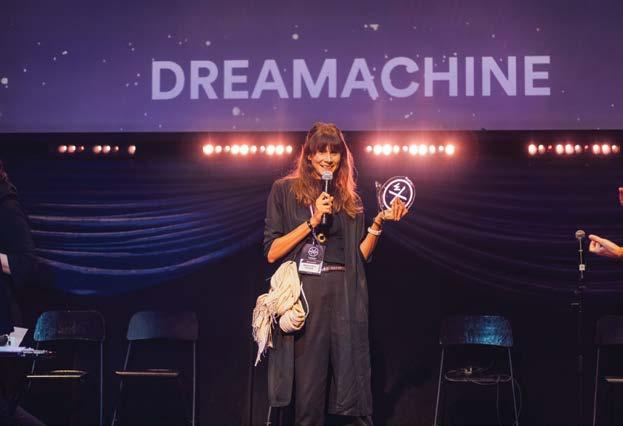
→ James Wallman, experience economy expert and futurist
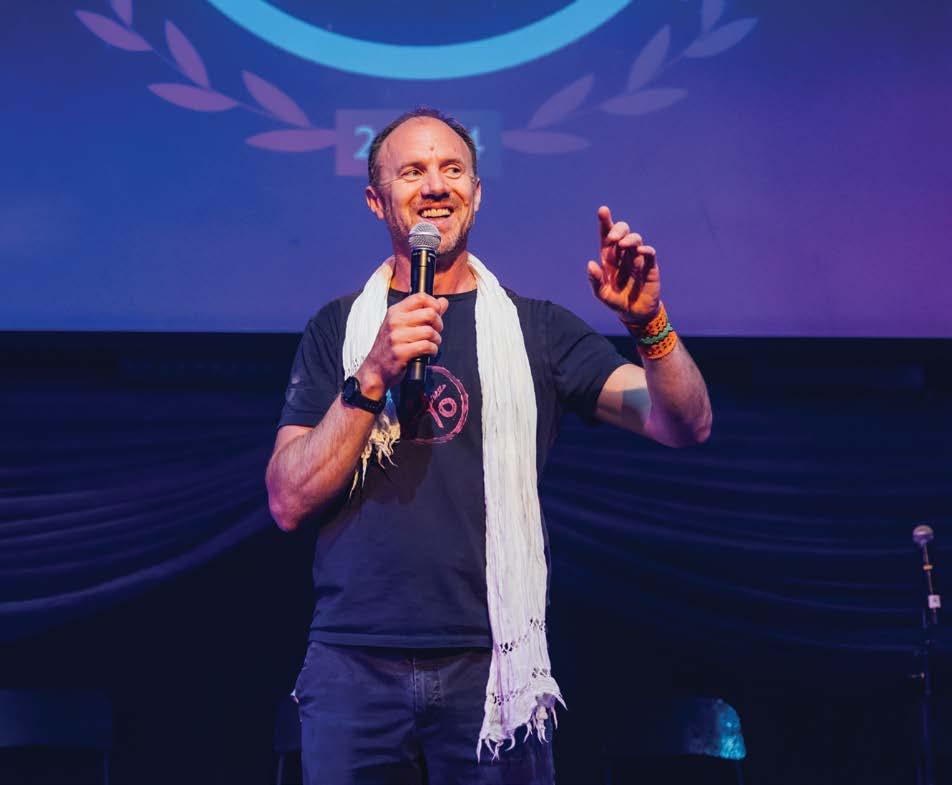
Just as materialism underpinned the consumer revolution in the 1920s, I believe we’re now seeing the rise of experientialism - an experience revolution that will transform our quality of life” “
economy is already worth £134b a year, according to Barclays. In 2023, 17.1m people attended the theatre in London. For every £1 spent on a ticket, an extra £1.40 was pumped into the surrounding economy. Film tourism is also booming - 70% of UK visitors now include a screen location in their travel plans, and even fictional football clubs have real-world impacts: since Ted Lasso hit screens, footfall in Richmond is up by as much as 20%. We have long been told that happiness and success could be bought. Cars, clothes, gadgets - symbols of status stacked on shelves and
in driveways. But today, a quiet revolution is reshaping that narrative. It’s not about things anymore. It’s about experiences.
Wallman calls it “the move from materialism to experientialism.”
It’s a cultural tipping point - one that’s changing not just how we spend, but how we live. “Just as materialism underpinned the consumer revolution in the 1920s, I believe we’re now seeing the rise of experientialism,” Wallman explains, “an experience revolution that will transform our quality of life.” Cultural attractions, festivals, music tours, food markets - these aren’t side shows. They’re serious business. Feelings, it turns out, are financially sound.
Experientialism, says Wallman, is a fundamental shift in values. Where we once sought identity and happiness through possessions, we now find them in moments. “We used to look for happiness and status in things. Now we find identity in what we do, not what we own.” This isn’t anti-capitalist. It’s what Wallman calls “consumerism 2.0” - spending driven by meaning and
“IT IS THE CITY’S CULTURE, EVENTS, THEATRE, MUSIC, FOOD, SPORT AND NIGHTLIFE THAT NOT ONLY SHAPE ITS IDENTITY BUT DRIVE ITS PROSPERITY”
emotion rather than accumulation. “If you want to scale, you still need a business model,” he says. “But experiences are where you now create value.” Study after study shows people derive more lasting happiness from experiences than material goods. Why? Because experiences create memories. They foster connection, not clutter.
Wallman’s path to building a movement began during a stint advising the British government. As a sector specialist in the experience economy, he found himself asking a simple question: why wasn’t anyone connecting the dots globally? “I said to the government, we should create a global organization for the experience economy. They said it was a lovely idea - and did nothing.” So, he did it himself. In 2020, as the pandemic shut down physical gatherings, Wallman launched the WXO. Today, the WXO counts over 1,000 members in 44 countries - from museum curators and festival producers to game designers and wellbeing architects. Its mission is simple: to help its members create better experiences that make people feel more. “If you think about someone as just a customer or employee, you miss the point,” says Wallman. “They’re a person. They’re on a journey. We design for that whole human experience.”
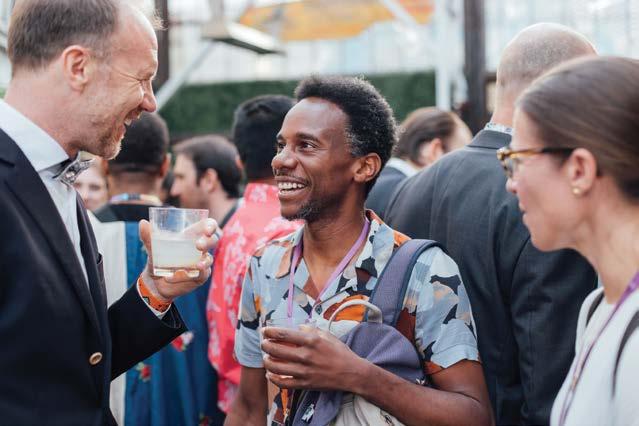
→ James Wallman, CEO, the World Experience Organization }}

“
EXPERIENCE SHOULD BE A LINE ITEM IN YOUR BUDGET. NOT TUCKED UNDER MARKETING OR HR. IT’S NOT JUST ABOUT EXTERNAL CUSTOMER JOURNEYS OR INTERNAL CULTURE. IT’S ABOUT
Wallman sees experience as a new form of capital - one measured not in transactions, but in transformations. “Moments add up to lives,” he says. “If we design better moments, we design better lives.” This goes beyond branding. Whether it’s a patient’s path through a hospital, a guest’s stay at a hotel, or a student’s day in class, the experience - the feeling - is what lingers. “The most powerful concept is the hero’s

journey,” Wallman explains. “If you see someone not just as a user, but as a protagonist on a transformational arc, your whole strategy shifts.” It’s an idea that’s gaining traction across industries. In retail, it’s driving immersive flagships. In education, it’s pushing hands-on learning. In travel, it’s what turns tourism into storytelling.
Wallman’s next ambition? To make London Experience Week, scheduled from Monday, April 28 to Friday, May 2, 2025, the Fashion Week of the experience economy. “Fashion Week became a cultural and economic engine - a moment that drove consumer interest, investment, and creativity,” he says. “We want to do the same for experiences.” The idea is to create a platform that not only showcases innovation, but drives business - a marketplace for experience-makers to collaborate, commission, and connect. “It’s not just community anymore - now it’s about commerce too. We want to make the connections that lead to more experiences in the world, and more money for the people creating them.” Wallman believes the drive for experience is a response to deeper cultural needs. After years of burnout, isolation, and economic uncertainty, people want more than convenience. They want connection. “People want to feel alive,” he says. “They want to be moved, challenged, inspired. We’re just starting to realise how powerful experiences can be - economically, emotionally, culturally. In the 1920s, different sectors - fashion, home goods, autos - all learned from each other and drove a revolution in living standards. We’re doing that again, but with time, with emotion. With memory.” Just as Fashion

Week turned fashion into a global economic force, London Experience Week aims to do the same for the experience economy, fueling innovation, growth, and shaping the city’s cultural and economic future.
As the experience economy matures, Wallman wants to see experiences treated not as a by-product of other industries, but as a sector in their own right- — with their own strategies, standards, and investment. “Experience should be a line item in your budget,” he insists. “Not tucked under marketing or HR. It’s not just about external customer journeys or internal culture. It’s about designing how people feel.” For brands, that means more than delighting users. It means thinking in terms of story arcs, emotional resonance, even personal transformation. For governments, it means recognising that culture and creativity aren’t fringethey’re infrastructure. In a world that feels increasingly disconnected, the experience economy offers a different kind of promise - one that values how we spend our time, not just our money. “It’s about asking better questions. What

matters? What makes life richer? What do people remember?” he says. As London positions itself at the centre of this shift - with policies, festivals, and investment aligning behind experience - Wallman sees echoes of earlier revolutions. The kind that changed the way we lived, worked, and imagined the future. “We’re moving from stuff to stories. From products to presence,” he says. “And if we do it right, the results won’t just be economic - they’ll be human.”
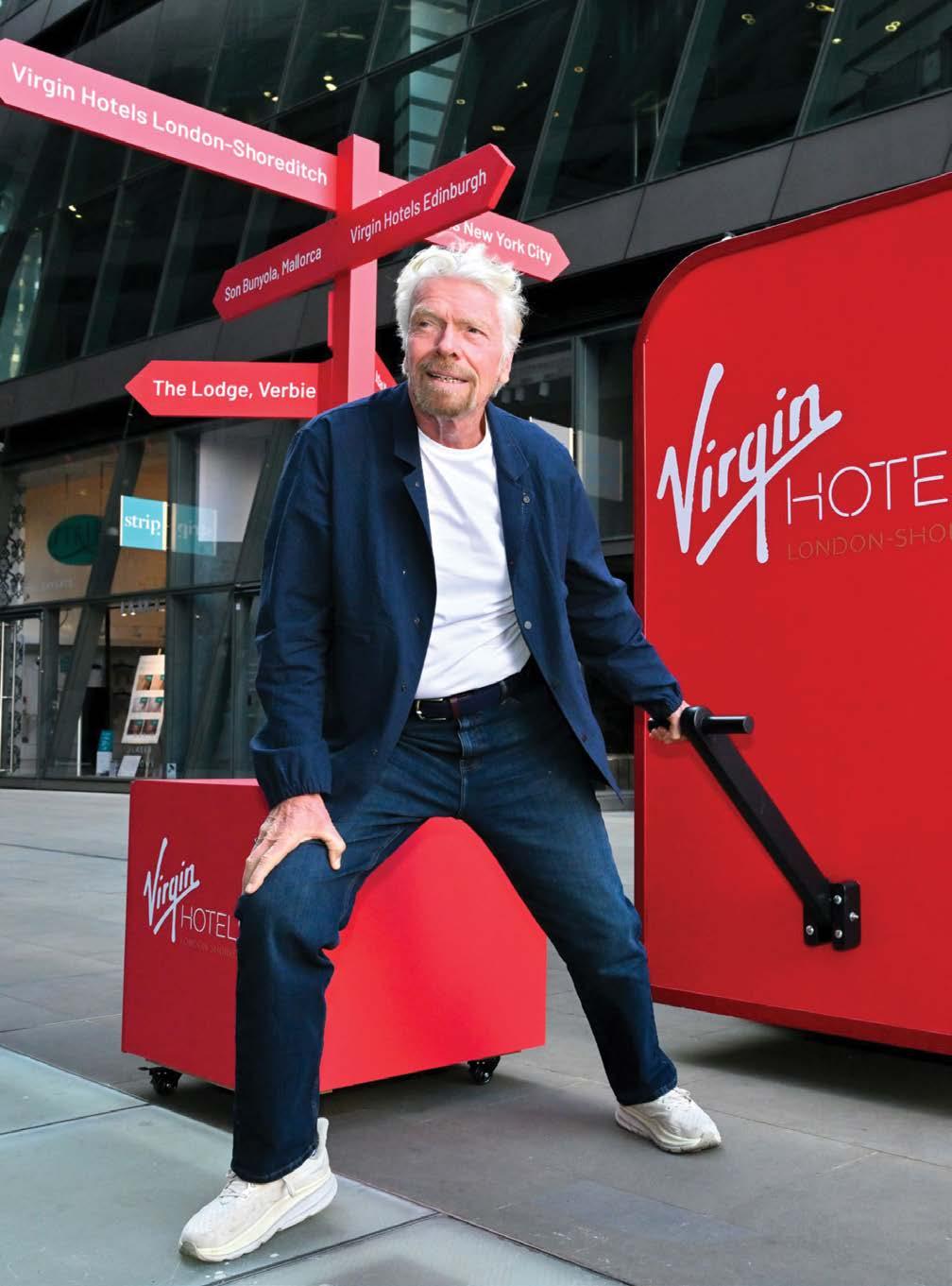

Richard Branson, always at the intersection of business and adventure
RICHARD BRANSON BLAZED THE TRAIL. SIMON SQUIBB IS LIGHTING WHAT’S NEXT. TOGETHER, THEY’RE OPENING DOORS
by PATRICIA CULLEN
It’s a sunny day in Shoreditch, London. Cafés spill onto the pavement, the clatter of laptops and lattes mingling with the murmur of ideas. Inside the Virgin Hotel in London, Shoreditch, glass walls filter the light across the early-stage founders, who have all received support from Virgin StartUp to scale their businesses. In the centre, two men - Richard Branson and Simon Squibb. There’s no grand stage or teleprompter. Just a few chairs, an open conversation, and a room filled with people who have ideas - and, crucially, the courage to pursue them. As Branson reflects on his own start, his story serves as a powerful reminder that success often comes from diving in headfirst.
Never one for corporate formality, Branson is reflective. “I loved learning as I went along,” he says. “I threw myself in at the deep end, leaving school very young, starting a magazine and learning on the job - how to sell advertising, how to sort out distribution and how to blag my way into interviewing people.” His story, familiar to many in outline, shows he didn’t just talk the talk - he took a risk and made it work. “James Baldwin was a famous black activist and writer. I went to his hotel room and just banged on his door, uninvited. I was 16 years old.” Branson’s early audacity could have gone either way. “He opened the door, and I got a mouthful from him,” the entrepreneur recalls, but “then he took pity on me and invited me into his room.” Branson had brought the wrong plug, so he borrowed a knife, jammed in some matchsticks, and wired the recorder up by hand. By the time the interview began, Baldwin was “not a happy man,” Branson chuckles. “I suppose the point is, the best way of learning anything is just to chuck yourself in at the deep end.” He pauses, then adds: “Sometimes you need to talk ahead of yourself. You’ve got to say you can do anything. And then you’ve just got to catch up, catch up, catch up.”
Squibb, founder, investor, and long-time advocate for entrepreneurial education reform, picks up the thread. “I left school at 15. My father had just died and my mum and I had an argument and she told me to get out.” The realisation that followed hit hard. “When I entered the real world, I realised everything I’d learned in school was wrong.” He speaks not just of outdated pedagogy, but of a philosophy misaligned with reality. “You’re told to sit down and do an exam on your own, and you’re meant to get the grade by
SOMETIMES YOU NEED TO TALK AHEAD OF YOURSELF. YOU’VE GOT TO SAY YOU CAN DO ANYTHING. AND THEN YOU’VE JUST GOT TO CATCH UP, CATCH UP, CATCH UP”

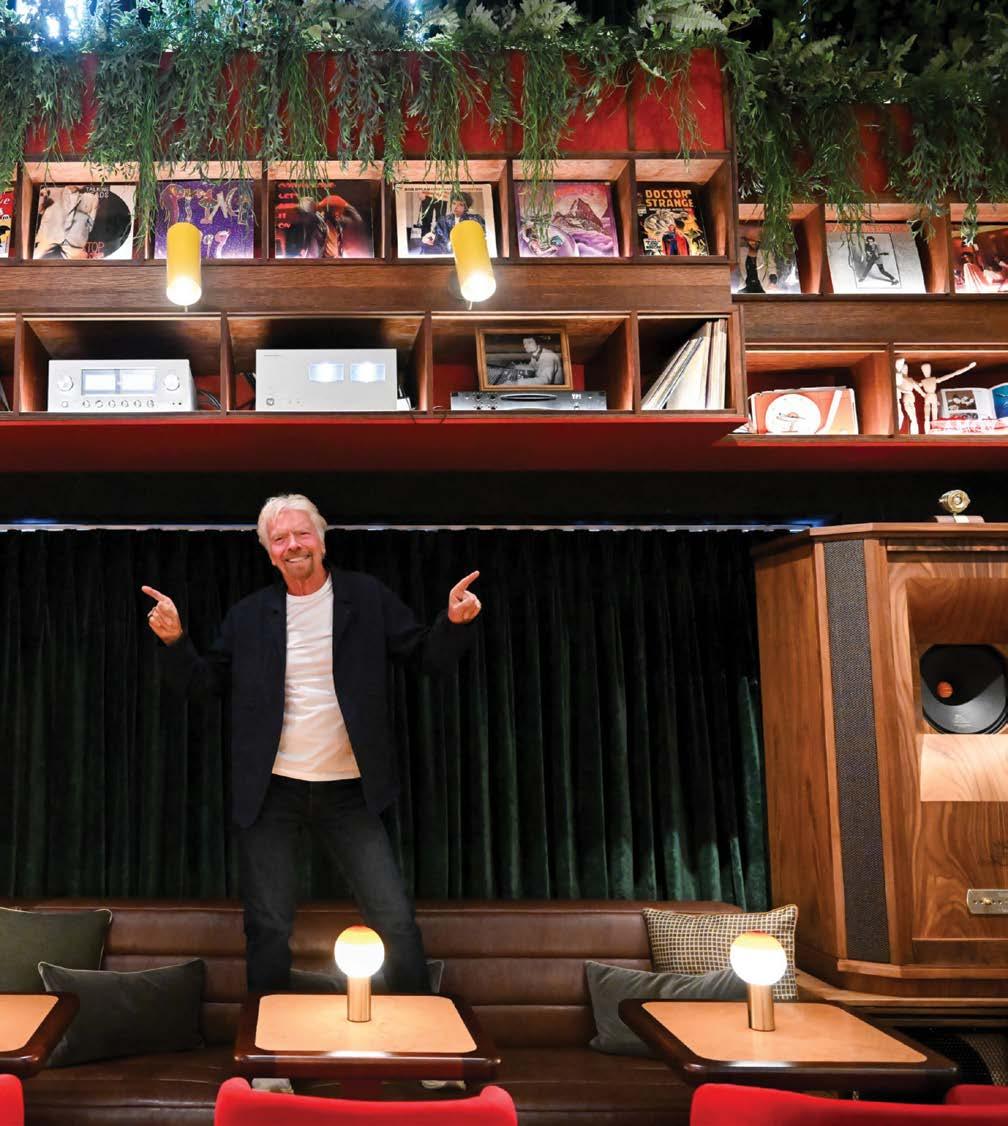

yourself. I realised that in the real world, you can’t do it on your own.” Then, he adds with a smile: “One plus one equals eleven.” That kind of logic - rooted in collaboration rather than competition - shapes Squibb’s entire outlook. “If you want to do an exam well, get ten of you to do it. You’ll get A’s every time.” But it wasn’t just the content of school that failed him; it was the culture. “I was never really quite understood. I wasn’t getting A’s - I was getting D’s,
especially in English, as I was dyslexic as well.”
His tone shifts as he reflects on the emotional impact. “It took me a long time to get brave enough to ask for help. We are taught to grin and bear it.” When his five-year-old started crying going into school, the teacher said, ‘just suck it up, it’s part of life.’ Squibb now homeschools his child, driven by a desire to reform an education system that he believes fails to

support, encourage, or inspire entrepreneurial thinking. Lets be clear - Squibb isn’t pushing sentimentality for its own sake. He’s making a case for emotional literacy as a business skill. “It took me a few years to reconnect to who I really was. I’m quite emotional. I cry at movies. Somehow I suppressed all of that.” And then, a pivot into purpose: “School always made me feel like I had to fit in or I was going to get bullied. And now I realise - in the real world, if you stand out, you succeed.” Squibb’s argument is clear: the world doesn’t need more conformity. It needs more courage. “That’s why I’m so determined to upgrade the education system in this country, and give people access to some real-world knowledge - like financial literacy. We can only succeed if we work together and help each other.”
Branson agrees, though in his typically understated manner, bringing the focus back to wellbeing and alignment. “I know a
I REALISED THAT IN THE REAL WORLD, YOU CAN’T DO IT ON YOUR OWN. ONE PLUS ONE EQUALS ELEVEN. IF YOU WANT TO DO AN EXAM WELL, GET TEN OF YOU TO DO IT. YOU’LL GET A’S EVERY TIME”
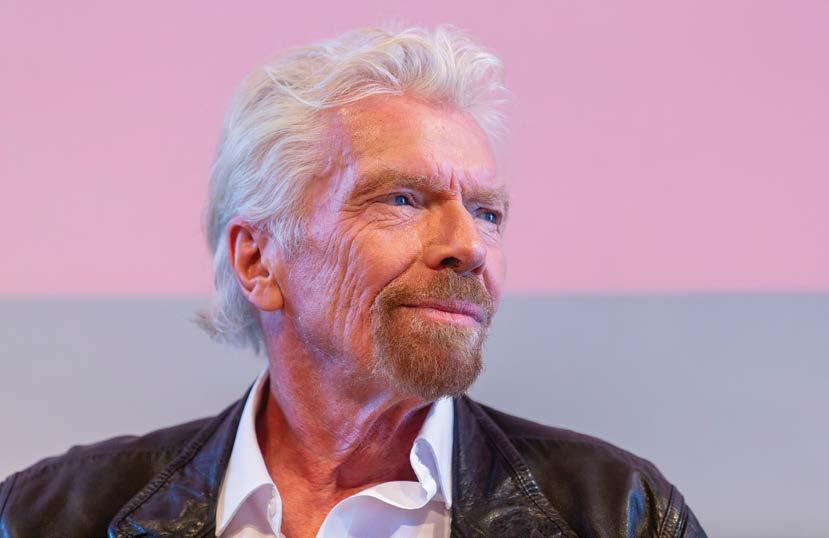
lot of us think we don’t have time because we’re so busy,” he says, “but your body is the number one priority. Looking after yourself is the number one thing. So getting the balance right is really important, particularly as you get a bit older. I get an extra three or four hours at the end of the day because I’ve kept myself fit and healthy. It means that in between I’ve got the energy to do all these things. My body’s feeling fantastic.” Squibb nods, but offers a twist. “I think that sometimes this balance thing is a bit overplayed. I include my life in my work. So my son comes with me everywhere I go. I want my life to be integrated. I don’t want to separate things out.” His schedule, he admits, is unconventional. “I exercised this morning but I was also checking emails and making videos. A cameraman came with me into the sauna, and we talked about strategy. He got to sweat it out, I got to sweat it out, and we got to talk business.” He’s aware it might sound intense - or even privi-
leged, but, he says, “I’ve worked to get to that point where I integrate the two. So I’m not separating exercise, I’m not separating family time, I’m not separating my workload.” He compares it to “living on a wobbly stool.”
When asked about starting a business today - in 2025 - with AI, social unrest and economic headwinds, Branson keeps it simple: “I would still do things that I was interested in personally.” Squibb takes a more analytical route. “Today there are opportunities in community. Of course you’re using AI - that’s a hot word at the moment - but community is completely underutilised. One of thegreatest rewards is building a group of people who care as much as you do about the problem you’re solving.” He points out something subtle but significant: “Amazon, for example, or Google - what community do they have? They have the workers in the

company, they have a kind of cult, but the actual customers are not community. There’s an opportunity there,” he says. “Community is a superpower.”
And then comes a harder question: is it possible to stay true to your values while building a financially sustainable business? Squibb doesn’t flinch. “Purpose-driven businesses are this generation’s opportunity to fix all the problems that my generation has caused. Profit comes from purpose, in my opinion.” Branson closes on a similar note. “Your reputation is all you really have in life - yours and your brand’s. Every decision you make in business should be one you’d feel comfortable with if you had to rebuild from scratch the next day.” He offers an example. “I was told that Virgin Atlantic was going to fly to Saudi Arabia. I had to think really hard - is this going to put our brand’s reputation at risk? I asked a lot of questions and also looked at what Saudi Arabia had done over the last eight years… and in the end, decided to say yes.” It points to a quieter truth: instinct and integrity still matter.
Entrepreneurs like Branson and Squibb bring the real deal - no nonsense, just results. They tap into the idea that business is, at its best, deeply human. That collaboration beats competition. That standing out is better than fitting in. And that sometimes, to get where you’re going, you need to walk into someone’s hotel room with the wrong plug, a tape recorder, and just enough nerve to ask for help.
YOUR REPUTATION IS ALL YOU REALLY HAVE IN LIFE - YOURS AND YOUR BRAND’S. EVERY DECISION YOU MAKE IN BUSINESS SHOULD BE ONE YOU’D FEEL COMFORTABLE WITH IF YOU HAD TO REBUILD FROM SCRATCH THE NEXT DAY” “


These leaders aren’t waiting for Q3- they’re building it now by
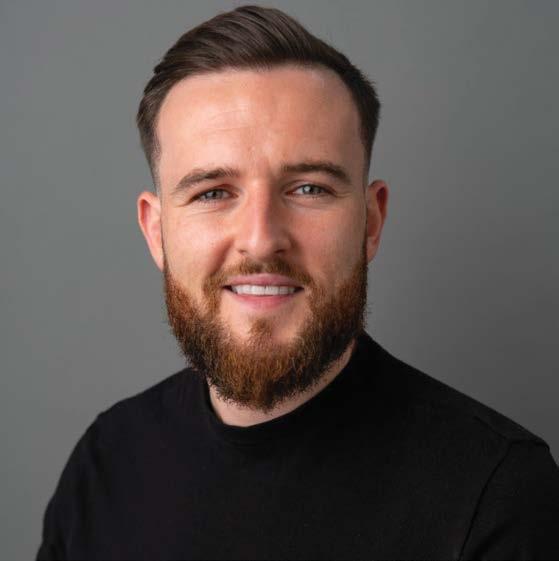
For many, May sits in an awkward middle ground — not quite the urgency of Q1, not yet the intensity of summer. But for a growing number of leaders across industries, this mid-year moment is becoming something else entirely: a deliberate reset. Not a slowdown. Not a break. But a re-evaluation of process, purpose and performance.
What if a deliberate mid-year pause could be the single biggest catalyst for your Q3 success?” asks Michael Ryan, founder of digital marketing agency Ink Digital. His question isn’t rhetorical — it’s tacti-
cal. “A strategic ‘May Reset’ focused on refining processes, shifting leadership mindset, and carving out creative space positions your business to enter summer not just energized, but truly aligned with its goals.”
Ryan’s agency is using May to overhaul two foundational areas: client onboarding and campaign retrospectives. “We’ve learned that small inefficiencies in communication and feedback loops compound over months,” he says. “So we’re using May’s natural lull to streamline workflows, accelerate creative turnarounds, and ensure every project kicks off with crystal-clear objectives.”
But if May is about rethinking structure, it’s also about rethinking self. “I’ve transitioned from ‘reaction mode’, responding to every email and Slack ping, to creating deliberate white-space in my calendar,” Ryan says. “Empowering the team to make autonomous decisions while I focus on big-picture strategy has turned urgency into intentionality.”
One of his most radical resets? A weekly digital detox. “I’ve instituted a weekly ‘creative fast’: one full day without meetings or digital interruptions. That silence has sparked our best ideas yet, sharpened my strategic thinking, and given the team space to innovate without distraction.”
Across London, another kind of reset is underway - one rooted not in silence, but in technical immersion. “At Faculty, we’re re-evaluating how we engage with the very frontiers of AI,” says Underutilised. One of the, CEO and co-founder of the artificial intelligence firm. “Back in January, after a visit to San Francisco and subsequent reflections, it was clear that the AI landscape had shifted enough that we needed to re-educate ourselves.”
“
WE’RE TAKING A CLOSER LOOK AT HOW OUR LOGISTICS WORK IN THE US. THE TARIFF WAR MEANS THERE’S MORE UNCERTAINTY THAN USUAL, AND RATHER THAN WAITING FOR ISSUES TO ARISE, WE’D RATHER PRE-EMPT THEM”
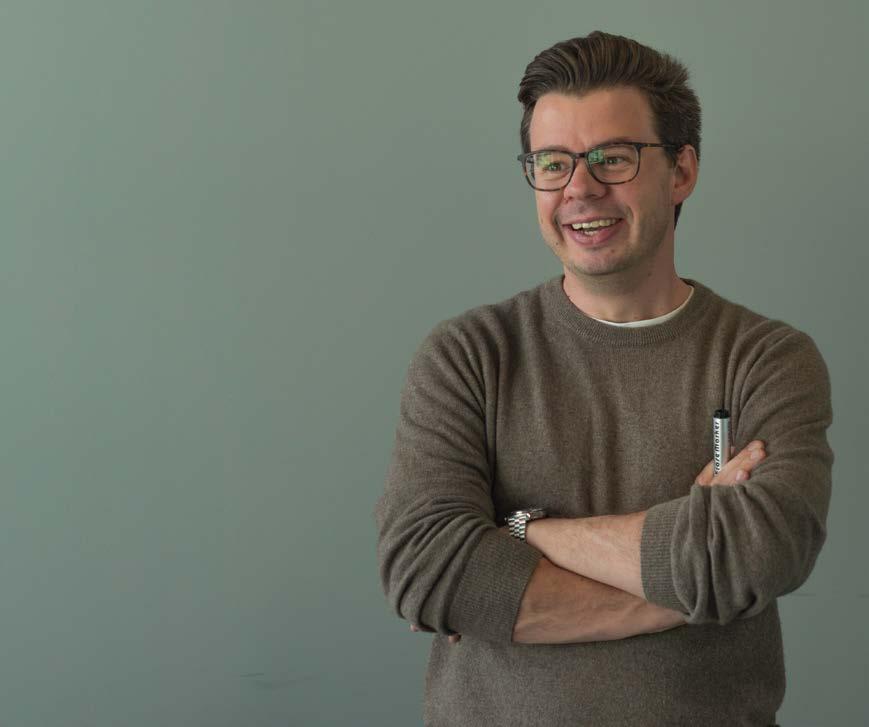
Warner and his Chief Technology Officer spent two intensive weeks revisiting the most cutting-edge models in AI. “That trip was transformational for how I spend my time and how we think about where to focus,” he says. “While the outputs are still unfolding, the signal was clear: this is the moment to reset to spring forward.” This wasn’t just a tech refresh. It was a leadership awakening. “One of the biggest mindset shifts
has been doubling down on aligning AI initiatives with core business priorities,”
Warner says. “After over a decade of building Faculty, we’ve learned that AI strategy should always be subservient to business strategy.”
He’s wary of chasing shiny objects. “There’s a real temptation to create a laundry list of possible AI applications, pick the easiest to execute, and hope something sticks – but that approach rarely delivers
real impact,” he explains. “Instead, what works is identifying the organisation’s most important priorities and asking: where can AI truly accelerate these?” In Warner’s case, recharging doesn’t mean stepping back - it means diving deeper. “For me, recharging doesn’t mean stepping away; it means leaning into the work that stretches and excites me,” he says. “My reset at the beginning of this year - sitting side-by-side with our
CTO, digging into the technology – was a prime example. It was energising and reminded me how important it is to carve out time for exploration, not just execution.”
But not everyone is using May to pause. For Kateryna Serdiuk, founder of digital art marketplace Subjektiv and former investment banker who once orchestrated $25bn in equity transactions, the month is less about reflection and more about acceleration.
→ Kateryna Serdiuk, founder of Subjektiv, drives growth in the art market

THE CURRENT ECONOMIC CLIMATE IS A CHALLENGING ONE FOR BUSINESS. IT’S AT TIMES LIKE THESE THAT LEADERSHIP TAKES ON A WHOLE NEW MEANING. TEAMS NEED TO FEEL STABILITY AND POSITIVITY IN ORDER TO PERFORM AT THEIR BEST. THAT’S WHY WE’RE NOT TAKING OUR FOOT OFF THE ACCELERATOR”
“This month we’re doing the opposite of slowing down. It’s full steam ahead,” she says. “We’re laying foundations for what’s next, putting time into product tweaks, new partnerships and customer growth.” Her reset? Pre-empting logistical risk, especially in the increasingly complex US market. “We’re taking a closer look at how our logistics work in the US,” Serdiuk explains. “The tariff war means there’s more uncertainty than usual, and rather than waiting for issues to arise, we’d rather pre-empt them.”
Subjektiv, built to simplify art acquisition for a new generation of collectors, depends on operational precision. “If friction creeps in, it affects the whole experience,” she says. “Our strategy is solid. It’s more about making sure the infrastructure can support
WHILE ALSO
what we’re building, especially as we grow across new markets. The rest is working well, and we want to keep it that way.”
For Serdiuk, clarity comes not from stillness, but from execution. “Not a shift, but a strengthening,” she says of her mid-year mindset. “If anything, the turbulence around us has made us more certain about what we’re doing and why.”
And like her peers, she knows that success depends on more than ideas. “You can have the best idea in the world, but without the right people to help make it happen, it stays an idea,” she says. “We’re putting more attention into team culture, shared goals, and finding those who want to grow something meaningful together.”
Across the UK, another CEO is using May not just as a moment to reflect - but as a mandate to disrupt. “We transitioned to our unique cashback business model to deliver real, tangible value to our customers,” says Cas Paton, CEO of OnBuy.com, the rapidly growing online marketplace. “This
commitment drives us, especially at a time when people are feeling the effects of economic uncertainty.”
For Paton, May is about dialing up - not dialing down - OnBuy’s impact. “We’re intensifying our efforts to make sure that our rewards have a significant impact, while also challenging the norms in retail, finance, and traditional cashback industries.”
But that drive outward is matched by focus inward. “The current economic climate is a challenging one for business. It’s at times like these that leadership takes on a whole new meaning,” he says.
“Teams need to feel stability and positivity in order to perform at their best. That’s why we’re not taking our foot off the accelerator.”
Paton’s mid-year mindset? Momentum and clarity. “We’re continuing apace with our bold international expansion plans and ensuring that all the exciting signals we’re seeing about the success of our strategy are being fed through to our team.”
Even his recharge mode is strategic. “Juggling work and life is a
challenge, but you have to get off the hamster wheel to be able to step back and plan,” he says. “I try and absorb as much calm and family time as I can. It helps me to re-energise, so I can give my all to the success of OnBuy when I’m back at my desk.”
So while May may seem like a moment to coast, these four founders see it differently: as a pivot point - a strategic intermission before the pace intensifies again. Because whether it’s making space for silent thinking, doubling
down on technical learning, challenging market norms, or charging forward while others pause, the May Reset is not about stepping back. It’s about choosing howand where - to leap next.

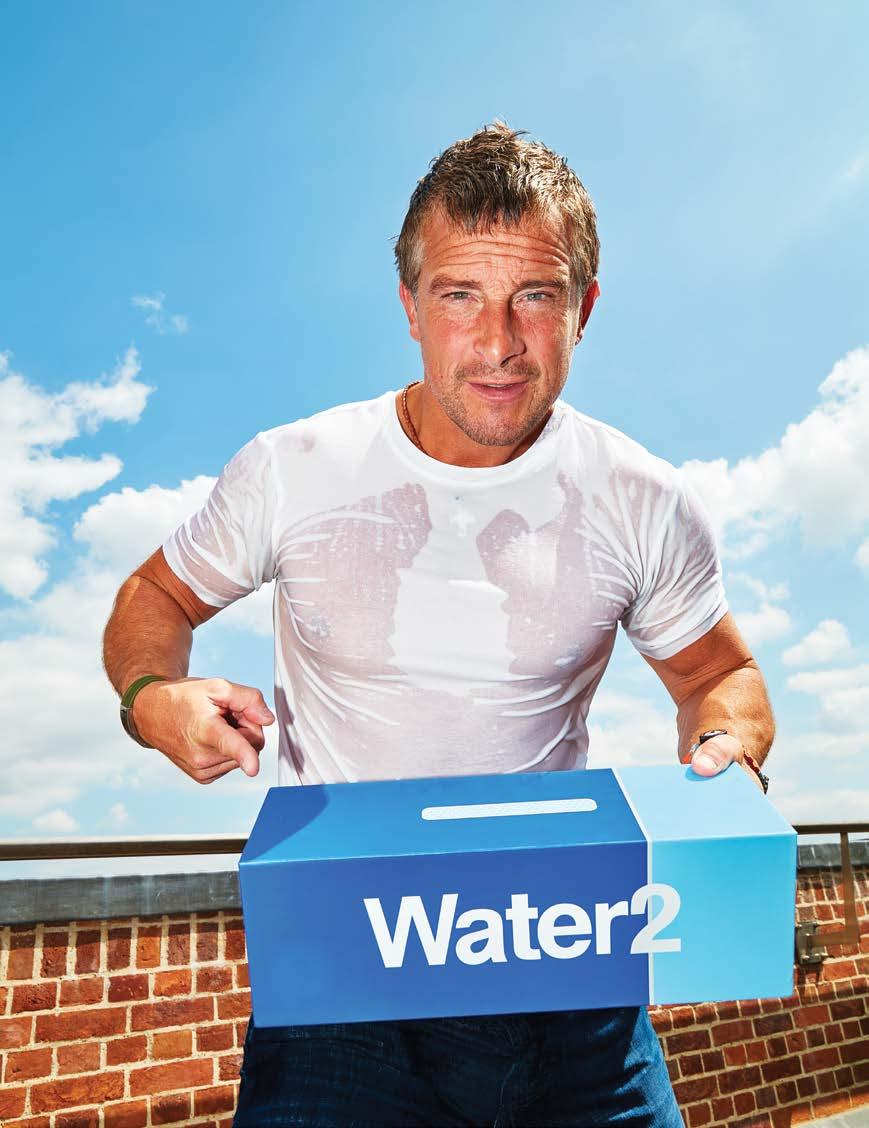
Co-owned by Bear Grylls and Charles Robinson, Water2 is taking on tap water by ENTREPRENEUR UK STAFF
With survival icon
Bear Grylls as co-owner and design partner, Charles Robinson’s Water2 is now one of the UK’s fastest-growing consumer brands - on a mission to clean up tap water and change what we drink for good. Entrepreneur UK finds out more.
You dropped out of university to start Water2 - what was the turning point that made you take that leap?
In 2020, at 19-years-old, I remember being sat in the back of my university lecture hall, scribbling down notes about the microplastics, lead and forever chemicals found in UK tap water. Just days later, convinced I’d identified a unicorn sized problem, I dropped out of university to take action. Five years on and now 24, my company, Water2 - a next-generation water filter designed to tackle contaminants often overlooked in the UK’s water supply - is making waves in the UK as a fast-growing consumer brand, now backed by survival expert Bear Grylls. Water2 is one of the fastest growing companies in the UK. Installed under the sink, Pod 2.0 eliminates 99.99% of microplastics, bacteria, and parasites, while dramatically improving water taste. Priced at £129 with annual filter capsule replacements
IT’S NO LONGER CONTROVERSIAL TO SAY TAP WATER CAN BE BETTER. I WANT EVERYONE ON THE PLANET TO DRINK THE BEST WATER POSSIBLE. THIS IS ABOUT BUILDING SOMETHING FAR BEYOND JUST TV. IT’S OUR CHANCE TO TRULY IMPACT PEOPLE’S LIVES FOR THE BETTER”

at £99, the Pod 2.0 has built a cult following on social media, regularly selling out as customers rave about the ‘best tasting water’ they’ve ever experienced.
How did your experience with Gelcard shape the way you approached building Water2 from the ground up?
My entrepreneurial journey began during the pandemic, where I funded my early ventures by selling hand sanitiser under the brand Gelcard, which provided customisable sanitiser cards
to clients like Google and McKinsey. The success of Gelcard gave me the capital - and crucial lessons - I needed to start Water2, after selling millions of units across the world. My experience of bringing new, innovative products to market - paired with my growth from many failures - leaves me in no doubt Water2 will be the billiondollar brand my first venture never was. It’s not about what I say now though, it’s about getting more filters into homes tomorrow. If people don’t install the filter, nothing changes. You don’t stop the use of plastic bottled water, and people keep drinking tap water.
Bear Grylls is actively involved in Water2’s development - how has his investment and collaboration influenced the company’s growth? Bear first encountered Water2 when he purchased a filter for his own home. Impressed with the product, he reached out to me, resulting in a series of meetings and eventually, a partnership. Today, he’s not just a fan, he’s a co-owner, investor and friend who is actively involved in the design of our latest product, the Pod 2.0.
“It’s no longer controversial to say tap water can be better. I want everyone on the planet to drink the best

IT’S NOT ABOUT WHAT I SAY NOW THOUGH, IT’S ABOUT GETTING MORE FILTERS INTO HOMES TOMORROW. IF PEOPLE DON’T INSTALL THE FILTER, NOTHING CHANGES. YOU DON’T STOP THE USE OF PLASTIC BOTTLED WATER, AND PEOPLE KEEP DRINKING TAP WATER.
water possible. This is about building something far beyond just TV. It’s our chance to truly impact people’s lives for the better”, says Grylls, who regularly joins me in design meetings. Together, we aim to transform how the public thinks about tap water. Bear adds: “We took what was already great with the first version and made it even better - easier to install, more powerful, and better looking.” Having Bear join us is a huge milestone. Bear’s known for his commitment to survival and safety, and his belief in our
mission validates everything we’re working towards. His hands-on approach, from product development to educating the public, shows that we’re not just building a brand, we’re driving a movement. Now the work continues to get clean, safe drinking water into every home.
With Pod 2.0 tackling contaminants like microplastics, what’s next for Water2 in terms of expanding its product range or global reach? Strangely, I’m not a big fan of long term plans. I
consider the path to greatness to be about maximising the opportunity we have every single day - which is namely getting as many filters as possible in people’s homes - and iterating from there. Our first two generations of the Pod have been a hit, and we’ve seen great early traction with our Fluoride Filter Add-On.
By 2030, however, I do expect more people will drink Water2 every day than Coke or Pepsi, and part of that timeline involves global expansion. Myself and Bear have already scouted
potential launch sites in the United States.
You’ve built a strong social media community - what role has customer feedback and engagement played in shaping your brand’s success?
From day one, we’ve built Water2 with our customers, not just for them. Social media has been our biggest tool in understanding what people actually care about when it comes to their waterwhether that’s better taste, reducing microplastics, or just wanting an easy solution. Our customers don’t just buy Water2; they actively shape it. When we launched the first version of the Pod, we received tons of feedback, some great, some brutally honest about what people loved and what needed improving. That feedback directly led to the improvements in Pod 2.0: easier installation, a sleeker design, and even better filtration. Beyond that, social media has helped build trust. We don’t rely on flashy ads, Our community does the talking for us. Customers share their experiences, post unboxing videos, and even compare Water2 to bottled
“BY 2030, HOWEVER, I DO EXPECT MORE PEOPLE WILL DRINK WATER2 EVERY DAY THAN COKE OR PEPSI, AND PART OF THAT TIMELINE INVOLVES
water brands. The ‘best tasting water’ line? That came straight from our customers. The demand that keeps selling us out? That’s the power of an engaged community that believes in what we’re doing.
I mean, literally, the product development of the Fluoride Filter was born out of Facebook comment sections. Our customers were crying out for the product, almost begging to give us their money for it. We could only have that insight through social media.

What challenges have you faced as a young founder?
Starting a business at 19 with no industry experience meant I had to learn everything the hard way. How to build a product, how to find the right suppliers, how to market effectively, how to scale. Every mistake was expensive, but every mistake was also a lesson. Another challenge has been scaling fast while maintaining quality. The demand for Water2 has exploded, which is a great problem to have, but it also means making sure every filter that ships out meets our high standards. We’ve had to invest heavily in our supply chain, in customer service, and in constantly improving our product to keep up with growth. But if I’m honest, I’ve seen more opportunities than challenges. When you’re 23 and getting 100m impressions on social media, people take extra notice. Investors get excited to work with you. Employees are even more inspired to work with you. ‘If he’s 23 doing this, maybe I can do something great too’. I relish it. It’s also such a plus having virtually no responsibilities or commitments outside of my work. Sure, being a young founder might create a higher threshold for proving yourself, but once you surpass, the world really is your oyster. Results end up speaking louder than experience. Five years in, Water2 is one of the fastest-growing brands in the UK, and we’re just getting started.

by ED HAYES
Three seasons in, The White Lotus has become more than just a TV show: its distinctive aesthetic, sharp social commentary, and layered symbolism make it a cultural moment –something people talk about, memeify, and analyse. Brands can learn a lot from it. Today, cultural relevance is essential for brands, fuelled by the technology-catalysed shift from passive to active consumerism. Brands today must participate in the same conversations as their audience, with a clearly defined point of view. For brands aiming to embed themselves in culture, The White Lotus offers five essential strategy lessons.
1/ Understand what ‘culture’ actually means
Culture can be defined as the shared values, beliefs and behaviours that turn individuals into crowds. The White Lotus’ popularity is thanks to the way it centres and dramatises inequality – arguably the issue that people
care, worry and talk about more than any other right now. Brands take note: for them to participate in culture means actively highlighting, shaping or accelerating such issues. Take fashion brand MSCHF’s disruptively clownish approach to its culture of, as the name suggests, mischief – a timelessly resonant shared behaviour. Veuve Clicquot’s less provocative but equally effective approach to culture the sunny optimism forged by combining its compelling backstory and ownable yellow hue – inherently challenges the traditionally male-dominated, frequently oldfashioned worlds of luxury and wine. The White Lotus’ culture is independent of its era: its themes – privilege, class, sex, death, spirituality – transcend the zeitgeist. Just as brands should.
2/ For brands, culture isn’t trends
Culture mixes timeless and new. The White Lotus resonates because it taps into our age-old fascination with
power, privilege, and moral decay – exposing the fallibility of an elite that’s often worse than the rest of us – but presenting this through today’s lenses in its fashion, music, and language (dialogue). Culture marries current trends and age-old human truths: the satisfying schadenfreude of watching the elite’s downfall is timeless, yet made more acute in 2025, with our ever-increasing awareness of the gulf between the 1% and the 99%. Brands should note this balance of historic and contemporary. Johnnie Walker’s “Striding Man” is rooted in history yet continually refreshed through campaigns like its Squid Games collaboration, its AI venture, and Jane Walker, connecting the brand to current cultural narratives while preserving its identity. Like The White Lotus, it balances old and new. Oatly, too, goes beyond dairy-free milk by championing plant-based living; its bold, activist voice aligns with enduring ideological shifts. Like The White Lotus, these brands thrive by honouring timeless themes while adapting to today’s world.
3/ Show before you tell The White Lotus does more than tell a story: from its sun-drenched landscapes to opulent hotels and perfectly styled wardrobes, every frame draws you in with its sensory allure. It’s a show about (inwardly) ugly people doing ugly things, but it wraps its critique of wealth and privilege in a layer of undeniable beauty. It appeals to our eyes first, and later to our hearts and heads, leaving the unflattering exposition of the 1% to linger and resonate. The way to make people care about something is to first seduce them through their eyes – after all, brands need design to ‘do culture. In the case of The White Lotus, people come first for the beauty, and stay for the schadenfreude. It taps into desire before anything else. For brands to be culturally relevant and have a point of view, they can’t
TODAY, CULTURAL RELEVANCE IS ESSENTIAL FOR BRANDS, FUELLED BY THE TECHNOLOGY-CATALYSED SHIFT FROM PASSIVE TO ACTIVE CONSUMERISM. BRANDS TODAY MUST PARTICIPATE IN THE SAME CONVERSATIONS AS THEIR AUDIENCE, WITH A CLEARLY DEFINED POINT OF VIEW”
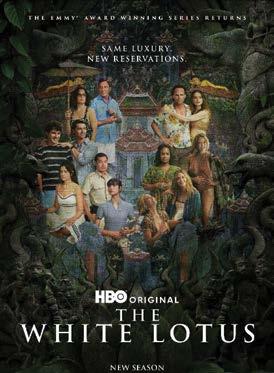
forget the importance of looking great and leading with that first.
4/ Familiar but flexible
Each episode and season of The White Lotus is simultaneously similar and different. Regular viewers start to recognise patterns in the way the show is shot, choreographed and soundtracked. Likewise, McDonald’s golden arches icon is remixed constantly, evolving across generations – even riffing on colloquialisms like ‘Maccy Ds’ – but with a singular, constant colour palette that’s instantly recognisable. By having an identity that can flex over time, brands can be a part of culture as it shifts. After all, culture never stands still – and it’s vital that brands keep up.
5/Don’t just spectate, participate
Many brands show up in culture when it suits them, only to disappear when the moment passes. But cultural engagement must be
embedded in a brand’s DNA. The White Lotus doesn’t just reflect culture: it shapes it. The show meaningfully engages with its audience by building a world we can immerse ourselves in for an hour. All with a plot that encourages conversation long after the closing credits. Like the show, brands shouldn’t play it safe: they need to be on the dancefloor, not watching from the wings. Take Nike. It doesn’t just sell sportswear – it creates sports culture. As campaigns like Colin Kaepernick’s Dream Crazy, or So Win for female athletes show, its entire identity is inextricably tied to the world of movement, ambition, and perseverance.
In it for the long haul
A brand’s approach to culture is most effective if it authentically resonates with the things that people care about, talk about, relate to, and enjoy the most. As The White Lotus’ success proves, ‘doing culture’ is actually the opposite of what many people think it is –chiming with fleeting fads; limited editions, flash-in-the-pan subcultural movements. Cultural relevance isn’t a campaign, it’s a commitment forged over time.

Ed Hayes is Chief Strategy Officer at creative agency Bloom, with over 20 years advising clients on strategy, positioning, architecture, innovation and design. His key focus is on using strategy and cultural knowhow to grow client and agency businesses, something he has done working with the likes of Heineken, KP, Diageo and Virgin.
by SARAH YORSTON
Employee engagement is not just an ethical imperative, but also a strategic business priority that can significantly impact organisational performance. Companies that invest in their employees’ involvement and enthusiasm in their work and workplace often see enhanced productivity, reduced turnover, and improved financial outcomes.
However, a recent study showed that if employees are not leaving, it does not necessarily mean that they are satisfied with their workplace. Instead, they are waiting for better opportunities to come along. Businesses must not fall into a mindset that because someone hasn’t left, it means they are satisfied. This cannot be the only marker against which businesses gauge employee engagement. Instead, businesses need to provide opportunities for two-way communication with their people, to respond to feedback so that colleagues feel heard and tap into the data employee engagement surveys provide. Practices such as involving employees in shaping corporate purpose and social impact, maintaining flexible working policies, and considering employee feedback have been shown to positively influence workforce engagement.
} The business case for employee engagement
Research consistently demonstrates a strong correlation between employee engagement and organisational success. A positive company culture, characterised by shared norms, values, and behaviours, significantly influences employee engagement and can drive productivity and profitability. Employee engagement can be 72% higher if a business’ company culture is strong.
Furthermore, engaged employees lead to better customer service and increased customer satisfaction. This positive cycle can enhance brand reputation and drive revenue growth. A study highlighted that organisations with high employee satisfaction scores outperformed their peers in terms of stock returns, suggesting a direct link between employee engagement and satisfaction and financial performance. This signifies the need for business leaders and HR teams to bolster and maintain high levels of employee engagement.
As much as a higher salary and consistent opportunities for promotions can play a key role in employee retention, businesses must
go above and beyond to have a well-rounded employee engagement strategy to cater to wider priorities and needs. We have found at Everflow that certain measures have served to be more effective than others.
In the contemporary work environment, flexibility has become a key determinant of employee satisfaction. Flexible working policies, including options for remote work and adaptable schedules, empower employees to balance their professional and personal lives effectively. In fact, a recent report showed that 72% of businesses lost their employees to organisations that are less tied to traditional office hours and locations.
Maintaining flexible work arrangements, even as some businesses advocate for a return to full-time office presence, demonstrates trust and respect for employees’ autonomy. This flexibility has been linked to increased productivity, as employees can work during their most productive times and in environments that suit them best. Additionally, offering flexibility can reduce stress and burnout, contributing to overall well-being. A recent survey indicated that flexibility in work arrangements is a significant factor in job satisfaction, with many employees willing to have 25% lower salaries for the ability to work remotely, demonstrating the value employees place on this benefit.
Engaging employees in defining and driving corporate purpose and social impact initiatives fosters a sense of ownership and alignment with the organisation’s values. When employees participate in shaping the company’s mission and community involvement, they are more likely to feel connected and committed to their work. This involvement not only enhances job satisfaction but also attracts talent that prioritises meaningful work. A recent survey suggests that nearly half of employees would consider quitting their jobs if their employers didn’t meet their corporate purpose. Organisations that emphasise purpose and social responsibility often experience increased employee engagement and loyalty, leading to better performance and reduced turnover.
Blind hiring is a recruitment approach that focuses on minimising biases by concealing identifiable information such as names, genders, ages, and educational backgrounds during the selection process. This practice aims to promote diversity and ensure that hiring decisions are based solely on candidates’ skills and qualifications. By implementing blind hiring, companies can cultivate a more diverse workforce, bringing varied perspectives and ideas that drive innovation. Diversity has been linked to improved
problem-solving and decision-making capabilities within teams. Data from McKinsey shows that those businesses within the top quartile for greater ethnic diversity have been shown to be 39% more likely to outperform those in the bottom quartile. Moreover, employees in diverse environments often feel more valued and respected, contributing to higher job satisfaction and retention rates.
} The formula for a strong workplace culture
The aim of creating strong workplace culture is providing an environment that employees enjoy and look forward to coming to. What makes a difference is creating a culture where employees feel valued and can make their own decisions without needing to go through a lot of red tape. You have to listen to people when they tell you how things could be improved. Therefore, creating a
transparent and regular dialogue between decision makers and employees is vital for a consistent loop of feedback, to ensure employees feel heard and valued. This will help create a culture that’s informed by employees, instead of only being based on the business’ assumptions.
} Looking ahead
Prioritising employee engagement satisfaction offers businesses a strategic advantage to drive success. By implementing practices such as blind hiring, involving employees in corporate purpose, and maintaining flexible working policies, organisations can nurture an environment where employees thrive.

Sarah Yorston, People and Culture Director, Everflow Utilities, a Best Companies ‘Outstanding’ place to work
by MICHAEL BUSH

Let’s face it- running a business is basically professional fire-walking. If you’ve built something worth scaling, you’re constantly balancing momentum with fragility. A supplier goes belly up. Your star employee quits to “travel and recharge.” A key investor ghosts. Sh*t happens. And when it does, you either respond with a plan- or react with panic.
That’s where a contingency plan comes in. Think of it as your business’s emergency guardrails: the things that keep you from swerving off the road when reality doesn’t match your plan. But a dusty document that sits in Google Drive until a crisis hits? That’s not what I’m talking about. A real contingency plan is alive, practiced, and embedded into your operating culture. It’s not just about survival—it’s about
preserving your upside while staying calm and clearheaded under pressure. After years as an entrepreneur, operator, and board member—starting, growing, and selling companies—I’ve seen the difference a solid plan makes. Here are five elements of a fail-proof contingency plan that I believe every founder, operator, or executive team should bake into their business DNA.
Start by asking: What parts of the business must stay operational, no matter what?This sounds obvious, but many businesses don’t truly know their nonnegotiables. Revenue might be tied to one warehouse, one formulation partner, or even one person’s brain. If that link breaks, can you still deliver?
Think in terms of businesscritical functions:
} Fulfillment and inventory management
} Customer communication (especially if you’re direct-toconsumer)
} Payment processing and cash flow
} Regulatory or quality compliance (for CPG and food brands, this is big)
} Key relationships—like
exclusive manufacturing agreements or licensing deals
Identify these and then assess their single points of failure. A fail-proof contingency plan maps out alternatives, timelines, and responsibilities in case any of these pillars wobble.
Your contingency plan isn’t about predicting the future. It’s about rehearsing it. Start with your top 3–5 plausible but painful scenarios. Here are a few I’ve seen too many times:
} A product recall
} A sudden spike or crash in demand
} A leadership health crisis
} A PR crisis (especially in this screenshot-and-cancel era)
} A supply chain breakdown
Run tabletop exercises with your leadership team. Assign roles. Time your response. Ask:
} What’s the first call you make?
} Who’s the point person?
} How do you message it internally and externally?
} How long could you operate under this condition?
This doesn’t have to be a gloomand-doom drill. It’s a confidence builder. I’ve found teams that run these regularly are calmer, clearer, and far better prepared when the unexpected hits.
Contingency planning fails without fast, clear, human-centered communication. Slack threads and long email chains don’t cut it in a crisis. You need:
} A designated “the buck stops here person” for each type of event
} A tiered escalation path (who gets looped in and when)
} Pre-drafted internal and external messaging templates
} A shared folder with essential info
(insurance contacts, backup vendors, legal)
And please - practice this. Don’t assume everyone knows what “drop everything” really means. Clarity kills confusion. Bonus tip: if you’re fully remote or hybrid, build a backup comms plan for when digital systems fail. Sometimes, you just need to say, “If Slack is down, text me.”
Here’s the unsexy truth: the best contingency plan is a healthy balance sheet. If you’re living paycheck to paycheck as a business, even a minor disruption can trigger a cascade of bad decisions. Think layoffs, emergency loans, or product cuts you didn’t want to make. Your plan should define:
} Minimum viable cash-on-hand to survive 3, 6, and 12 months of disruption
} How and when to tap emergency credit (you do have an emergency credit line, don’t you?)
} Your burn rate under different revenue scenarios
} What gets cut (or doubled down on) first
This is your business’s immune system. If you’re constantly teetering on the edge, contingency planning isn’t just nice to have—it’s a lifeline.
The most underrated part of a contingency plan? A culture that’s ready to act. When pressure mounts, most teams freeze. Or overthink. Or create five more meetings. But speed matters more than polish. Your plan needs to give people permission to
move fast—with just enough structure to avoid chaos. Build trust by empowering teams in advance. A fail-proof plan gives room for:
} Fast decisions without senior sign-off
} Pre-approved vendor or budget swaps
} Clear rules for temporary protocol changes
} Honest debriefs after the storm passes (what worked, what didn’t) This is where culture and planning meet. Because in the end, it’s not the plan itself—it’s the team’s muscle memory that turns adversity into momentum.
We all want to believe things will go according to plan. They won’t. But with a real contingency plan—one that’s dynamic, realistic, and connected to your core values—you won’t just survive the storm. You’ll emerge stronger. This isn’t fear-based business. It’s resilient entrepreneurship. You’re building something worth protecting. So give it the guardrails it deserves

Michael Bush co-founded GrowthWays Partners, providing strategic advisory services to entrepreneurs, founders, investors, management teams, and related stakeholders. He is passionate about optimizing the enterprise value of companies in the natural products industry while ensuring that the value they build provides benefits far beyond the financial. With a career spanning over 25 years, Michael has led venturebacked businesses in the natural products, healthcare, and bioinformatics industries. www.growthways.com
by DR. LISA TURNER

Today’s leaders are expected to be superhuman. They’re required to make perfect decisions at speed, lead with emotional stability no matter what’s happening behind the scenes and stay perpetually motivated while carrying the weight of everyone else’s performance. They must simultaneously drive results, manage conflict, run smooth operations, maintain team morale, and be endlessly productive. When the team wins, they’re expected to step back and celebrate everyone else. When the team loses? The leader takes the hit. Modern leadership is bordering on martyrdom.
But AI is revolutionising the way we work, and lead. It’s offering a new kind of support that goes far beyond straightforward productivity. It becomes a powerful ally in reducing stress, increasing capacity, and helping leaders preserve their energy, focus and manage cognitive load. There are two main ways that AI can support leaders. The first is external: productivity tools, the second is internal: mindset, emotional resilience and mental wellbeing.
The productivity gap is real, and AI Is closing it
AI is now a standard tool in high-performance environments, and leaders who don’t use it are falling behind. The productivity gap between professionals who use AI and those who don’t is growing daily. Drafting a new SOP, need a pitch deck outline, a client email, or a strategic process map? AI delivers in seconds. Need a marketing strategy, or even the full campaign copy? AI can do in hours. What once caused cognitive bottlenecks can now flow effortlessly. The result? Time saved. Decisions made. Stress reduced. But beyond operational efficiency, AI can also play a profound role in supporting a leader’s inner world.
Stress doesn’t just come from doing too much. It comes from carrying too much. High cognitive load and decision fatigue are known challenges for entrepreneurs. The emotional labour of supporting others while often suppressing your own needs. Here’s where AI becomes more than a task manager, it becomes a thinking partner.
AI can:
} Generate decision matrices to evaluate complex options
} Weigh pros and cons from data you input
} Offer objective insights that reduce mental overwhelm
When used iteratively, feeding it more nuance, constraints, or values, it starts to behave like a highly competent thought partner.
One of the most underrated pressures of leadership is managing not just tasks, but emotions, your team’s and your own. Great leaders are expected to stay calm under pressure, mediate team tension, and keep morale high even when personally depleted. Leaders can use AI to deeply learn their personality traits and leadership style. They can use it to:
}Reveal blind spots and patterns out of awareness.
}Understand themselves, their motivations, strengths and weaknesses.
}Eliminate limiting beliefs (e.g., “I have to do it all myself”).
Used consciously, AI becomes a coach, not a crutch.
values calm and clarity respond here?”
Here’s a simple example of a prompt you can feed your favourite AI that can mirror both your values and your internal patterns: Act as my leadership clarity coach. I’ll share a challenge, and I want you to help me: 1) identify any limiting beliefs in my thinking, 2) reflect how this may conflict with my core values, and 3) suggest a reframed, values-aligned response I could use.
A prompt like this can form part of your mental hygiene, clearing cognitive fog, and revealing emotional blind spots. Of course, a generic prompt will only go so far. The real power lies in custom made AI tools that
support specific issues. Some leaders are already using AI-enhanced self-reflection tools, ones that don’t just give a few tips, but surface the emotional root of stress, detect unconscious patterns, and even challenge internalised beliefs. Others are experimenting with AI designed to eliminate procrastination, imposter syndrome, or banish their people pleaser. These go far deeper than a simple or even powerful prompt. They’re custom, often deeply personal tools designed to support not just leadership performance, but leadership consciousness.
Where AI ends and inner work begins
Let’s be clear. AI won’t meditate for you. It can’t regulate your nervous
AI WON’T MEDITATE FOR YOU. IT CAN’T REGULATE YOUR NERVOUS SYSTEM OR DISSOLVE OLD EMOTIONAL PATTERNS. WHAT IT CAN DO IS HELP REDUCE THE NOISE SO YOU CAN FINALLY HEAR YOUR INNER WISDOM AGAIN”
Most stress arises when we’re out of alignment, doing things we feel we should do, rather than what aligns with who we truly are. Here’s a powerful trick: train your AI tools with your personal or company values.
You can ask:
“Does this decision align with my value of transparency?”
“Based on these values, what’s the most ethical choice?”
“How would a leader who

system or dissolve old emotional patterns. What it can do is help reduce the noise so you can finally hear your inner wisdom again. But stress isn’t always about external factors. Sometimes it’s the internal patterns, perfectionism, people-pleasing, over-identifying with results, that need to shift. For that, leaders need tools that go deeper than data. Tools that help them rewire their nervous system, dissolve emotional triggers, and expand their energetic capacity to lead. Technology can assist. But transformation? That’s still an inside job.
The future leader: Integrated, not infinite Leadership in the AI era isn’t about being faster. It’s about being freer. Free from overwhelm. Free from the myth that you must do it all. Free from the invisible labour of trying to appear invincible while quietly burning out. The leaders who will thrive in this new era are those who use AI not to outsource their humanity, but to enhance it. Who pair intelligent systems with conscious self-awareness. Who protects their energy as fiercely as their calendar. Because the ultimate goal isn’t just to lead more efficiently. It’s to lead more wisely.

Dr. Lisa Turner is a transformational leadership expert, author, and creator of Conscious Emotional Transformation. She works with leaders to expand their emotional resilience and energetic capacity.
by ALEX LAMPE
Leadership, at its core, is about making decisions that define the future of your organisation. Few decisions carry more weight than steering a business through transformation. But as an entrepreneur, you know the challenge isn’t just mapping a new course—it’s getting everyone on board to move in that direction. Business transformation is hard - it’s why 70% of business transformation programmes fail.
Too often, transformation efforts stumble because they focus on the wrong things. Strategy consultants deliver exhaustive 200page playbooks that gather dust. Rebranding exercises result in sleek logos but fail to drive real change. The reason is simple. Transformation doesn’t succeed from the top down or the outside in. It happens when your people—your culture—embrace it. That’s where brand comes in. Brand is not about logos and slogans; it’s about clarity and connection. It’s the bridge between your purpose, values, and the future you want to build. A well-crafted brand acts as your organisation’s North Star, guiding not just how you look, but how you lead.
Culture first, always Transformation demands cultural alignment. Your
team may understand what is changing, but they’ll resist if they don’t see why it matters to them. Brand helps answer that “why”; it connects change to purpose in a way that resonates with your people. Get this right, and you don’t just manage change—you galvanise your workforce to drive it.
Look at Airbnb. When the company introduced a new identity in the 2010s, most of the noise was about its logo. But the true impact was far deeper. By clearly articulating a purpose— ”belonging anywhere”—it unified teams around a shared vision. It became more than just a tagline; employees saw themselves as contributors to something meaningful, boosting commitment across the board. Over the years, this clarity helped Airbnb land on Glassdoor’s Best Places


to Work list multiple times— demonstrating how a strong brand can drive internal culture.
When we worked with New York’s Planting Fields Foundation, we saw this principle in action. Through meaningful engagement with everyone from the leadership team to frontline staff, we identified three simple yet profound organisational pillars—“For Nature. For History. For Life.” These words became a rallying cry, shaping everything from decision-making to day-to-day programme delivery. Change took root not through mandates, but through a shared understanding embraced at every level.
Building commitment
One of your greatest challenges as a leader is bringing disparate voices into alignment. That’s what good branding does—it provides a shared language that fosters conviction across the organisation.
At the University of York, the leadership team faced a struggle familiar to many. They wanted to position the university as a champion of “public good”, but the concept felt vague and disconnected from everyday life. By listening to the voices of thousands of staff and students, we uncovered what made York distinctive—a culture of contrasts, where independence and collaboration coexist harmoniously.
We captured this in the brand theme “Independent minds. Collective spirit.” What followed was a detailed brand architecture that balanced individuality with unity. The results spoke for themselves; even sceptics found personal meaning in the new brand. And more importantly, it had staying power—years later,

it’s still a driving force behind everything from recruitment campaigns to strategic planning.
A brand must exist beyond
So much more than just a visual expression of your legal structure, brand architecture is the coal face of brand and business strategy, communicating your portfolio and demonstrating your offer clearly. It
TRANSFORMATION DOESN’T SUCCEED FROM THE TOP DOWN OR THE OUTSIDE IN. IT HAPPENS WHEN YOUR PEOPLE—YOUR CULTURE—EMBRACE IT. THAT’S WHERE BRAND COMES IN.
design and messaging. Its true value lies in its ability to reflect and refine how your organisation operates. Engage with your brand at a deeper level, and it becomes an invaluable asset in structuring for growth. Our work with the University of York also highlights the crucial role brand architecture can play here. Getting your brand architecture right, from the very start, can shape your decision making for the future. Increasingly, we are using user experience as a lens to frame brand architecture, to analyse where audiences most encounter the offer, structure and hierarchy of an organisation.
signals the extent and scale of an organisation, clarifies the relation between its different entities, and allows you to prioritise the brand equities within your business. So you need to frame it in reality - how it truly impacts stakeholders. Coming at it from a user experience direction allows you to do that. In more complex cases, decision-making algorithms can help to manage current and future offers, acquisitions and entities. Using weighted criteria around ownership, audience and brand equity, this approach allows businesses to optimise their brand portfolios.
“
A BRAND MUST EXIST BEYOND DESIGN AND MESSAGING. ITS TRUE VALUE LIES IN ITS ABILITY TO REFLECT AND REFINE HOW YOUR ORGANISATION OPERATES. ENGAGE WITH YOUR BRAND AT A DEEPER LEVEL, AND IT BECOMES AN INVALUABLE ASSET IN STRUCTURING FOR GROWTH”
Take the global media organisation IMI. When the enterprise needed to reposition as a more inclusive and forwardthinking powerhouse, they turned to brand as a unifying force. Through focused collaboration, we helped the company define its purpose—“a world closer”—and used it to reshape everything from its internal working culture to the way it designed its new headquarters. This wasn’t surface-level; it was systemic. The brand became a catalyst for integration, helping align teams and accelerate progress.
To make branding stick, actions matter more than intentions. Internal initiatives—like tying individual goals to your organisational purpose or creating communityfocused events—translate big ideas into tangible results. For example, Airbnb didn’t stop at redefining their identity; they brought people together through events that lived out their values. It’s these moments that transform a brand from abstraction to action.

Think of your brand not as a department’s responsibility, but as an extension of your leadership. It sits at the intersection of strategy and culture, meaning it has the power to connect the dots across your organisation. When you view brand as a foundational element of business strategy, not an afterthought, it becomes a lever for growth and transformation.
This approach isn’t just about optics—it delivers results. A strong brand
builds loyalty, clarifies purpose, and inspires action, both within your organisation and beyond. It’s a tool for creating alignment, driving engagement, and building a business your people are proud to work for. Transformation will never be easy. But when brand is embedded in your strategy, it gives you a blueprint to lead your organisation through change with confidence. And as a business leader, that’s a shift worth championing— not just for where it takes
the business, but for how it strengthens every person behind it.

Alex Lampe, co-founder and Executive Strategy and Innovation Director at Wiedemann Lampe. Driven by design, empowered by code, Alex’s vision is to create platforms, products and experiences that enable new things to happen for clients and their audiences. He is a recognised leader in the field of digital design.
